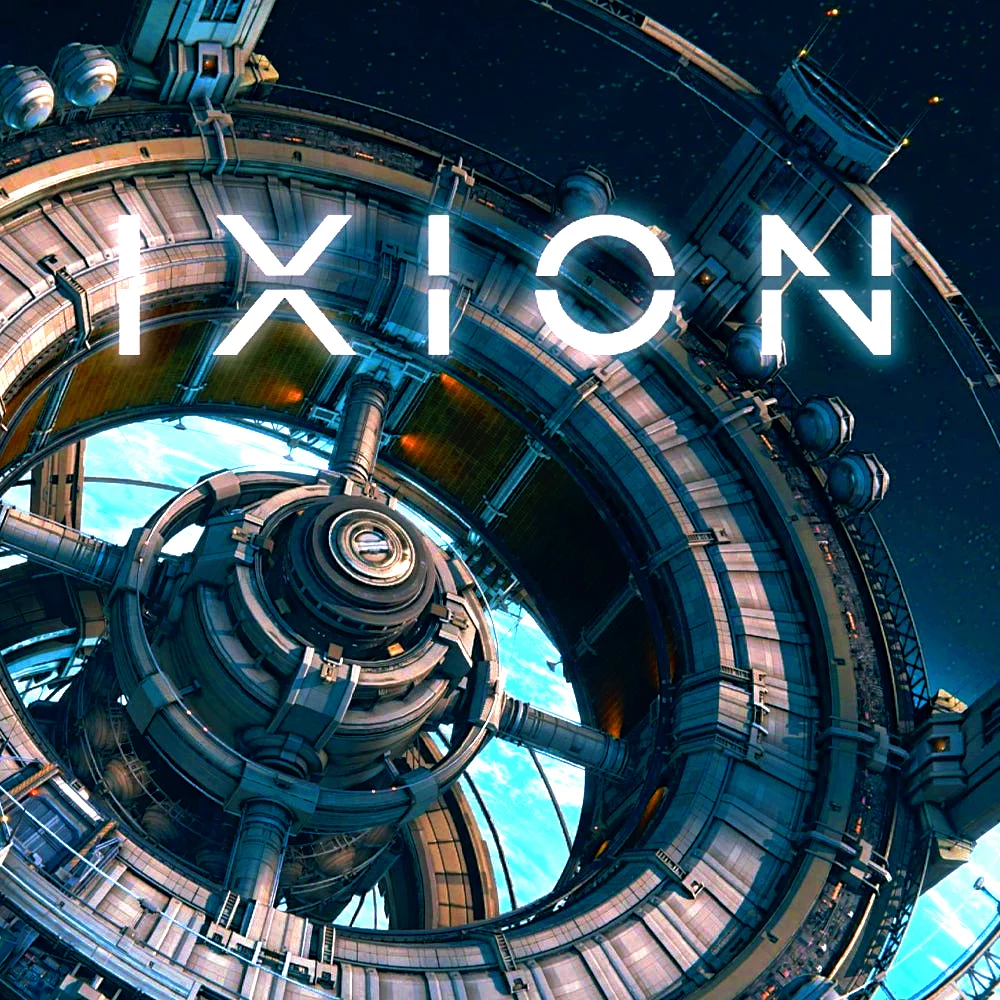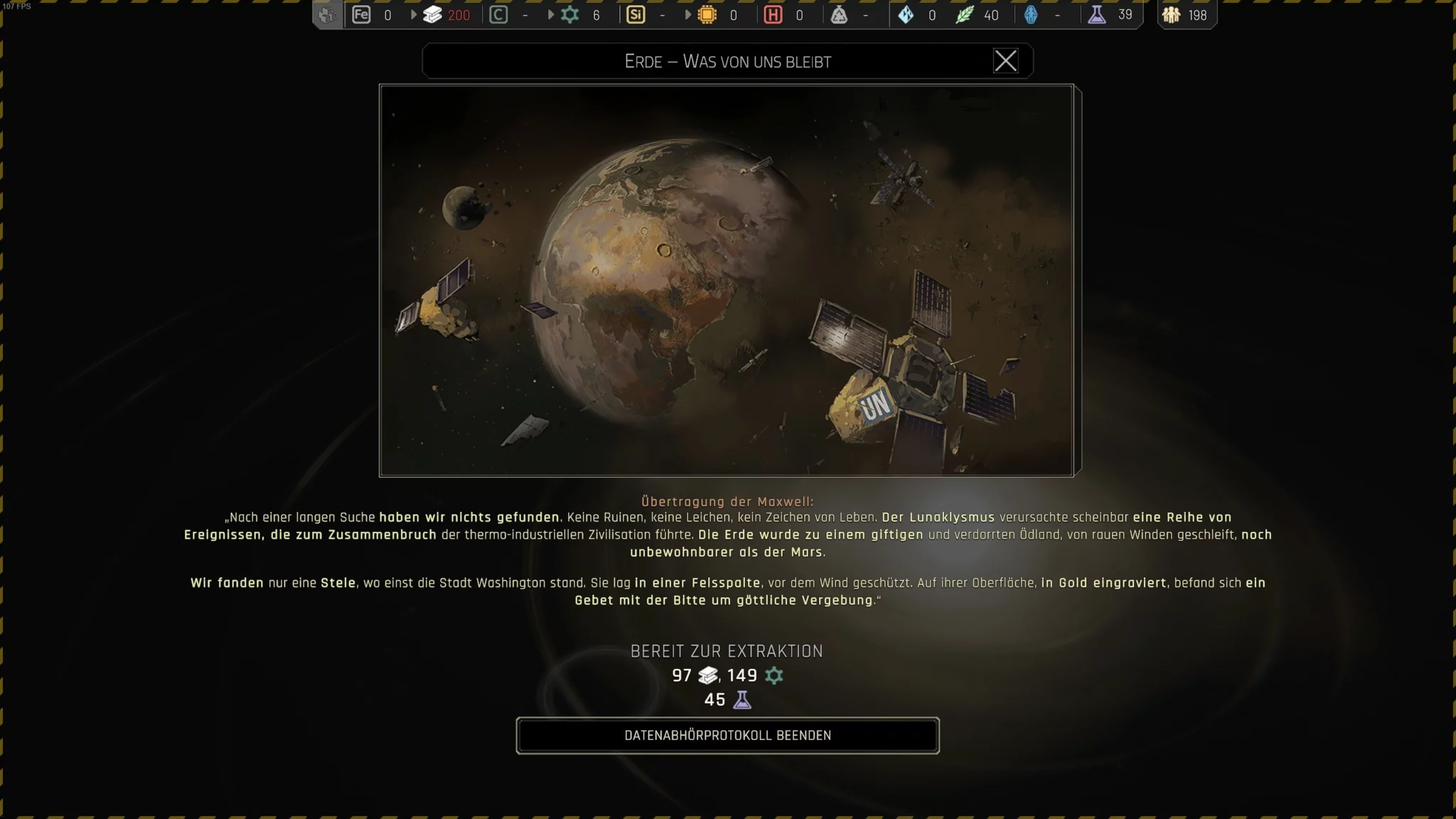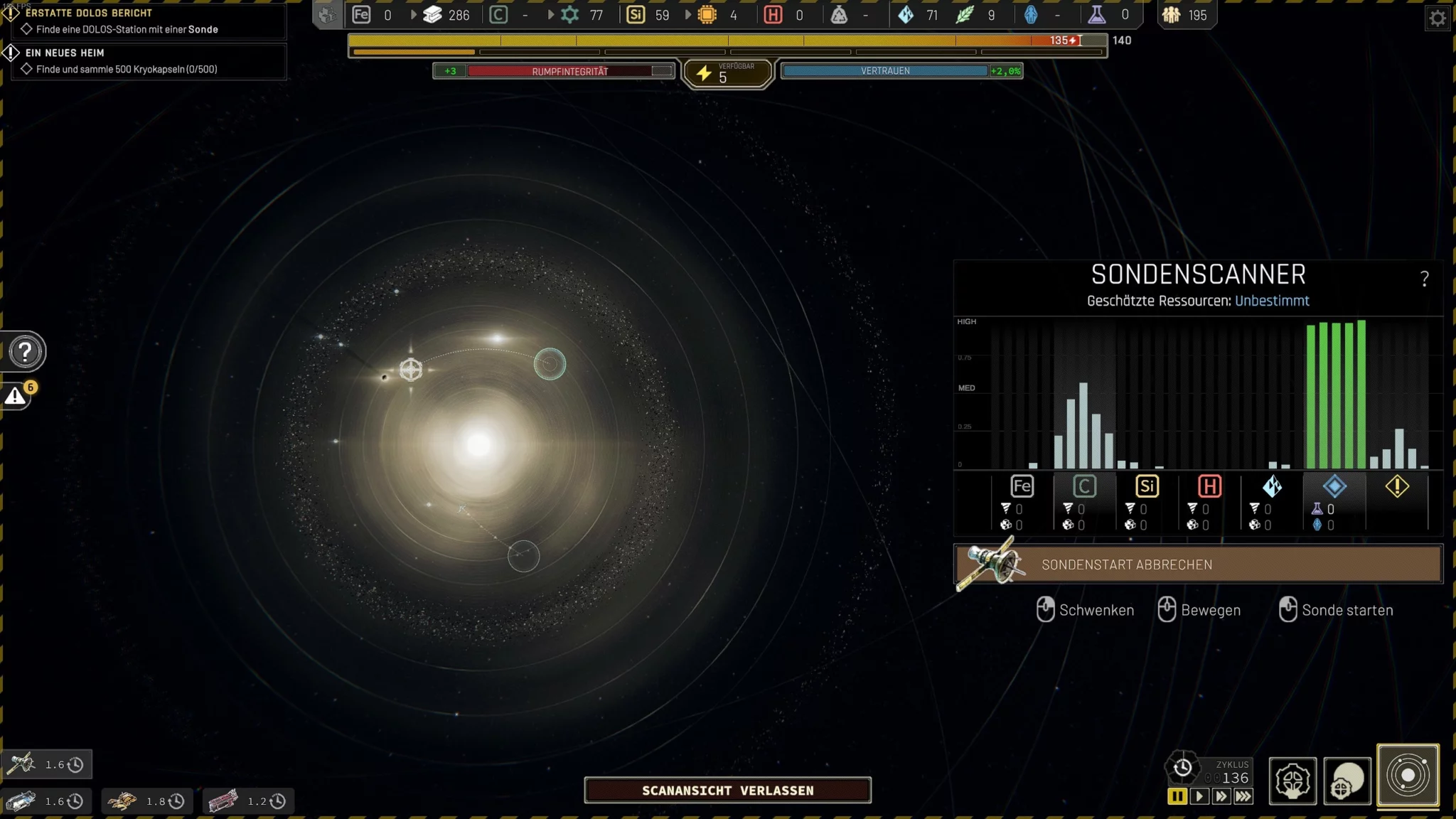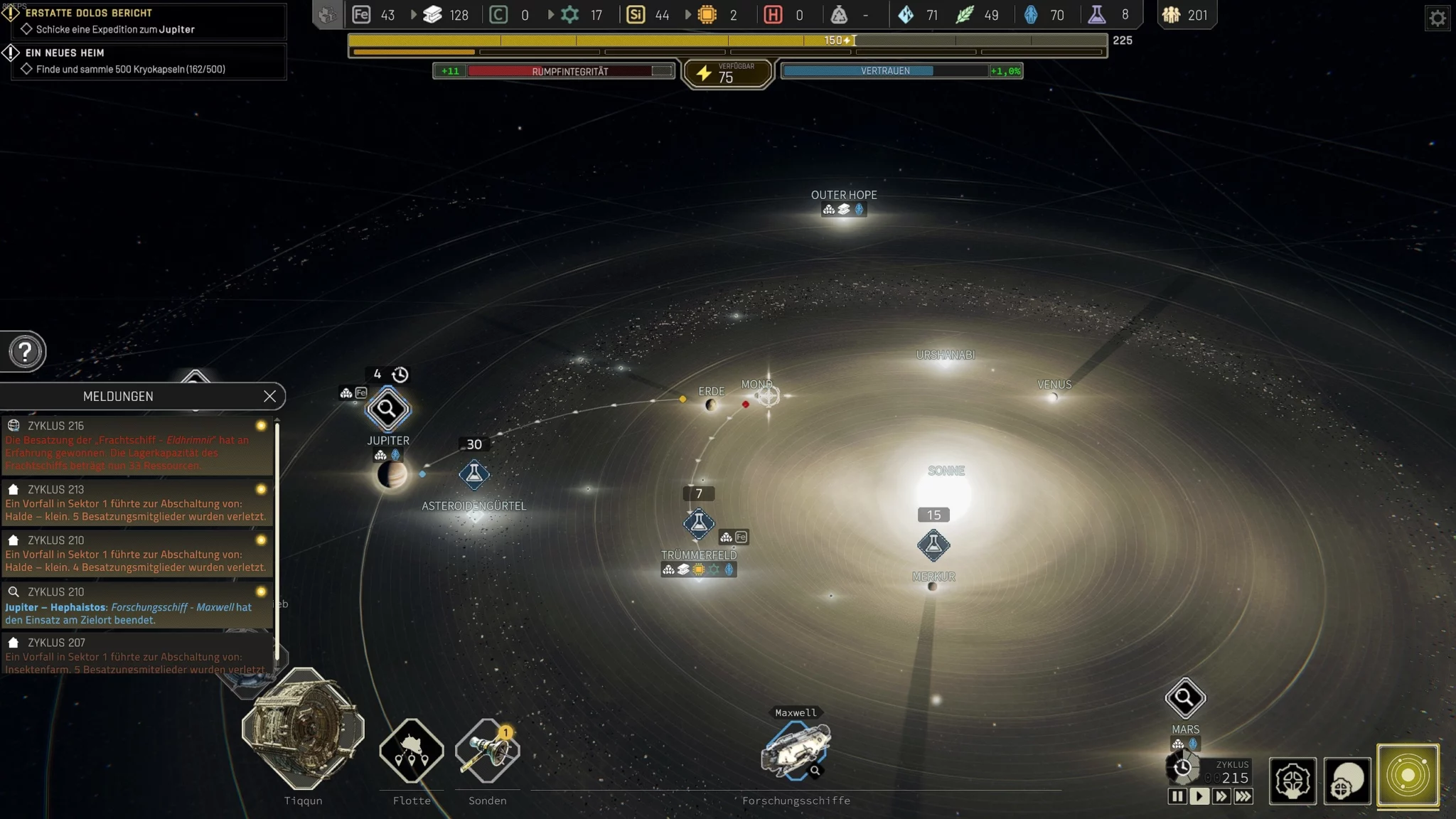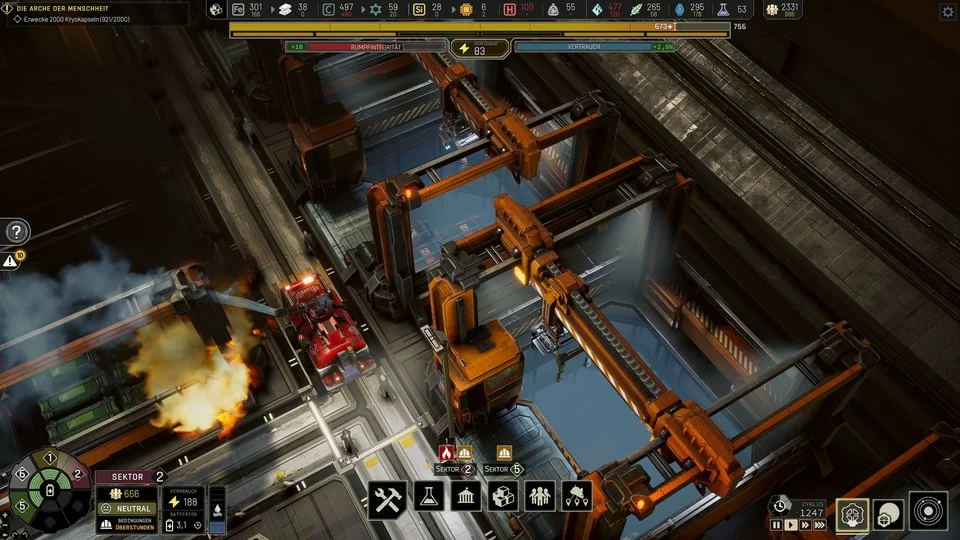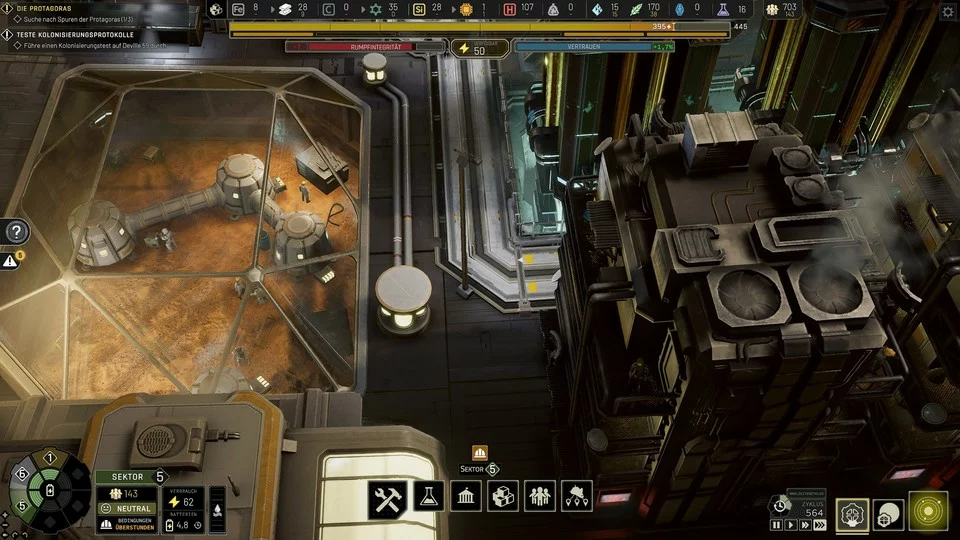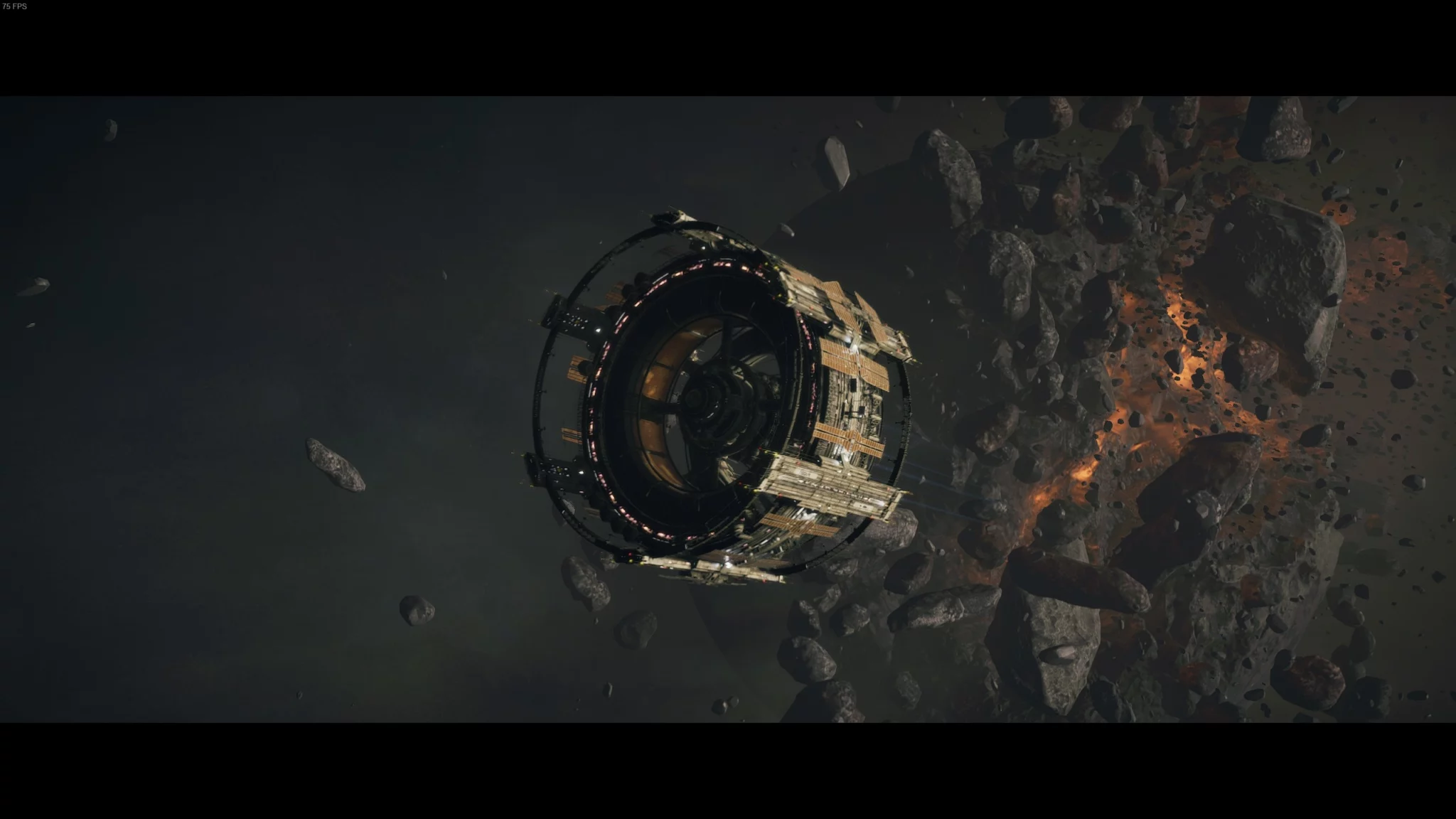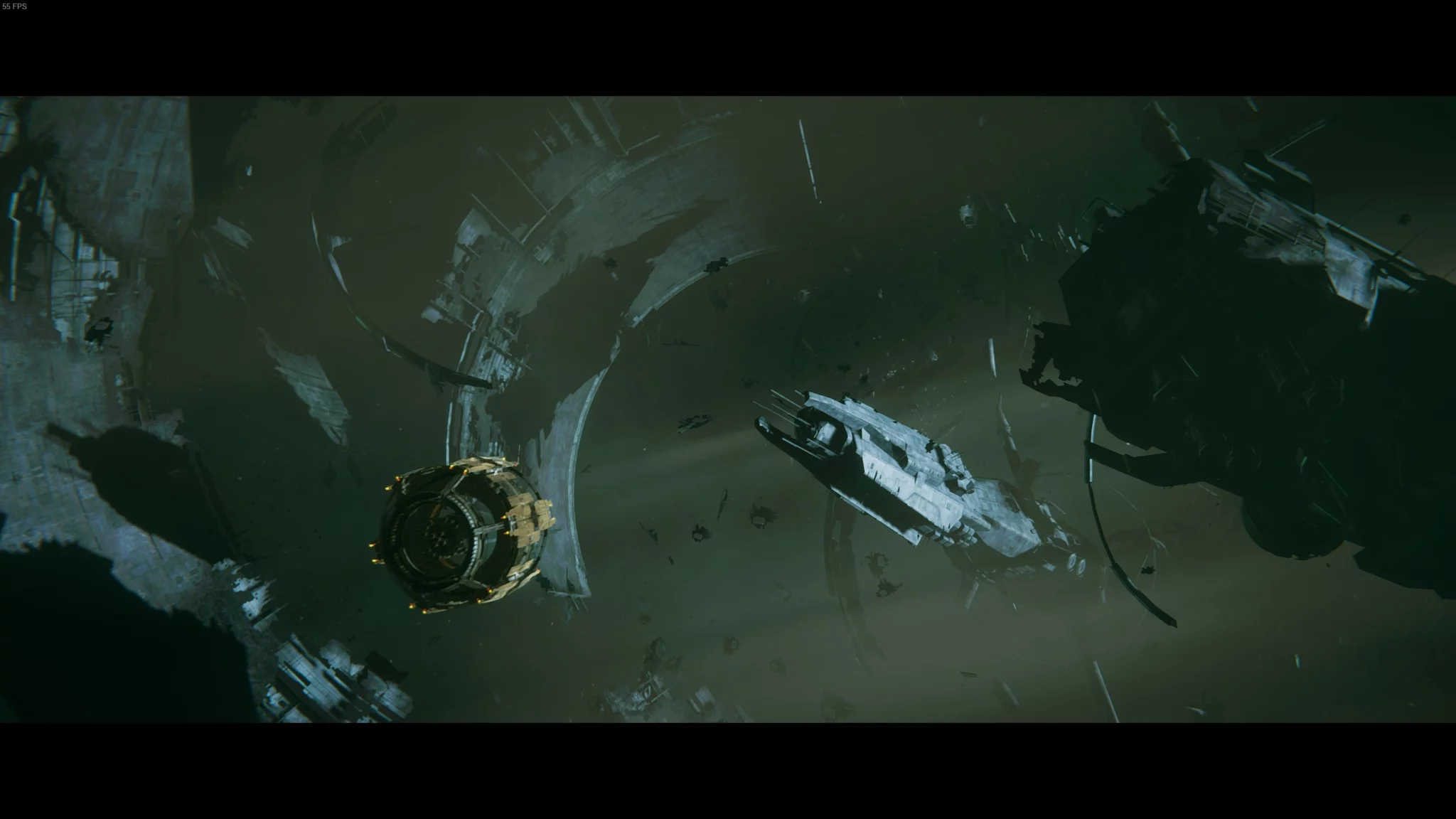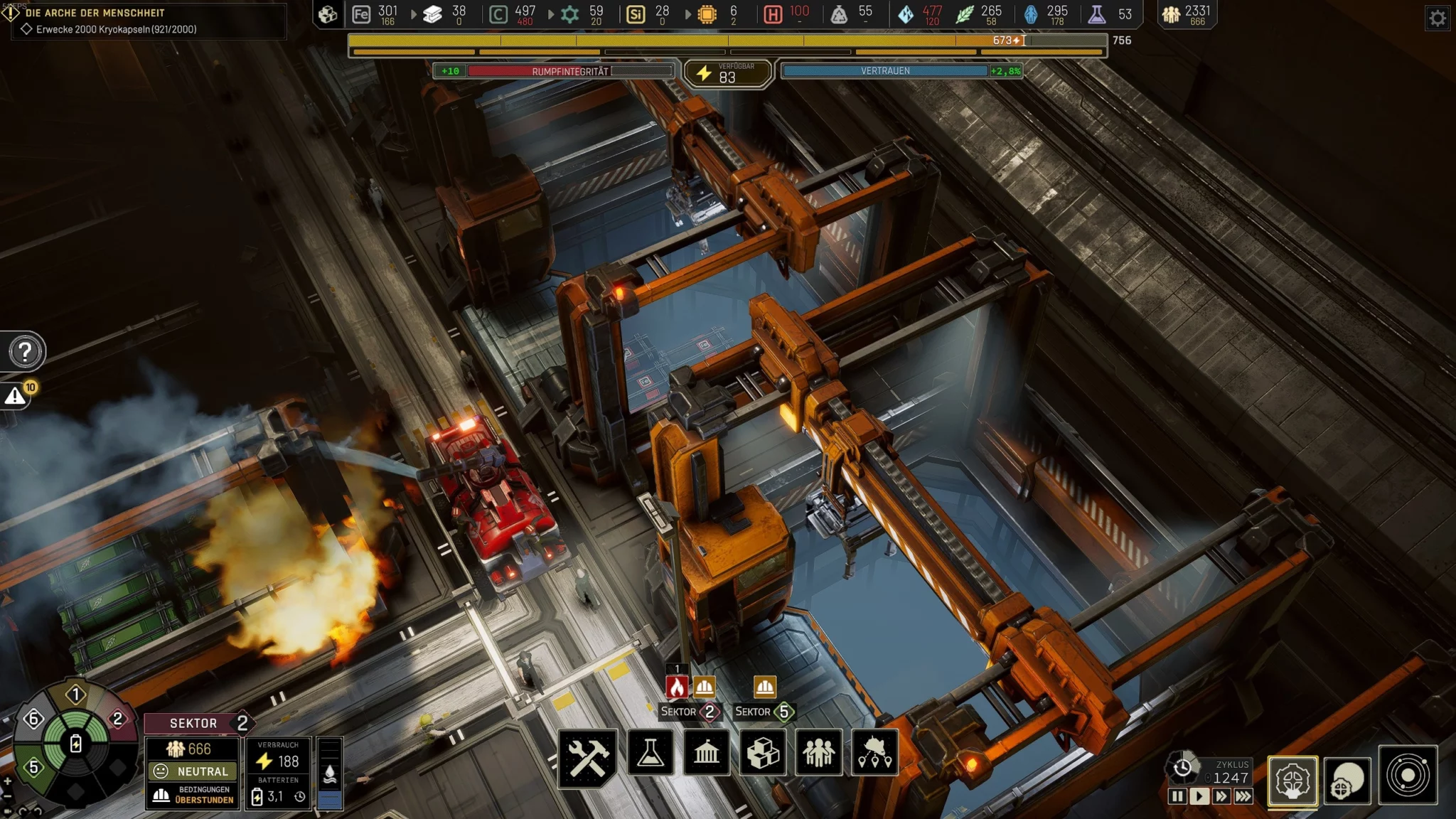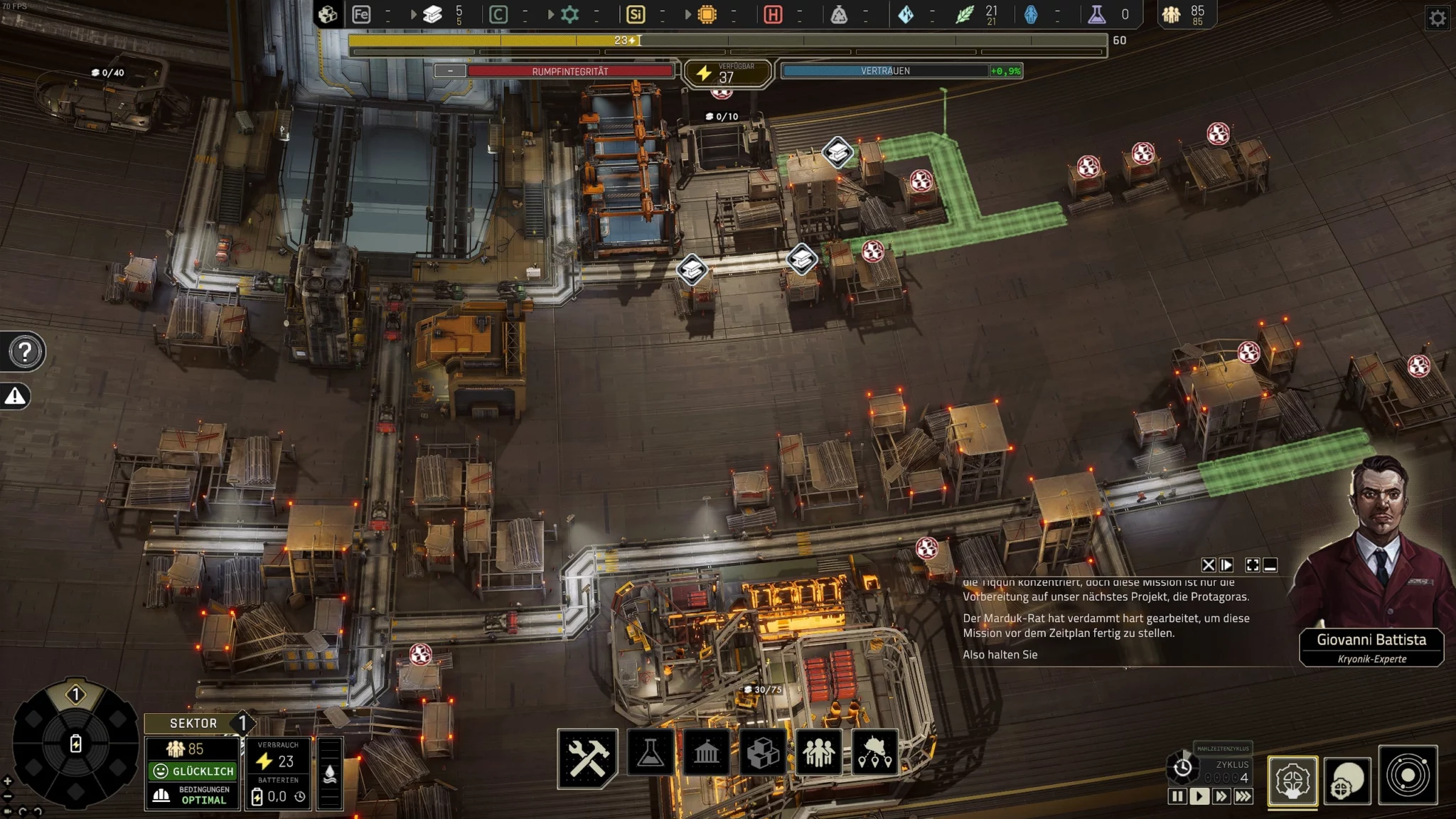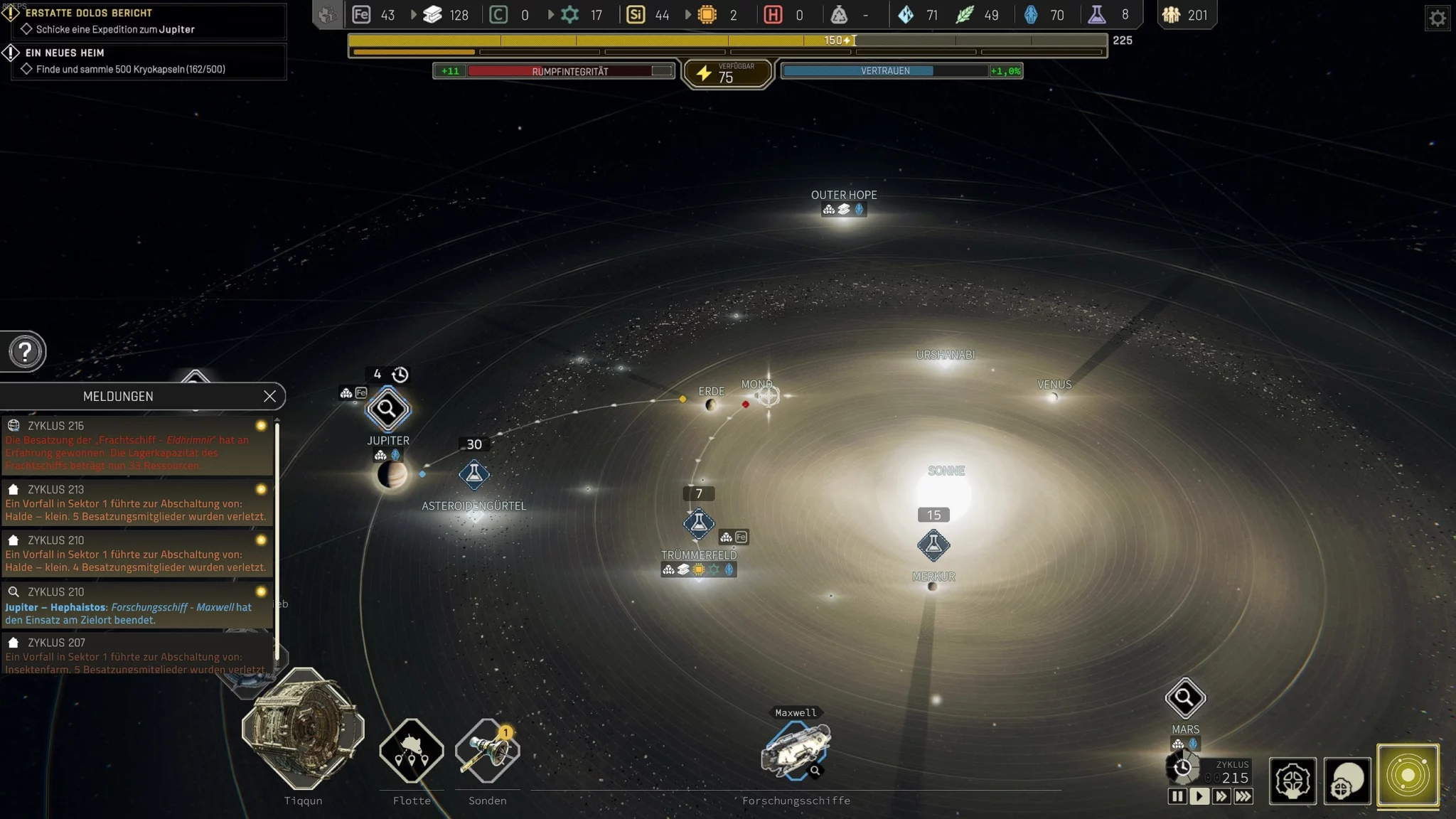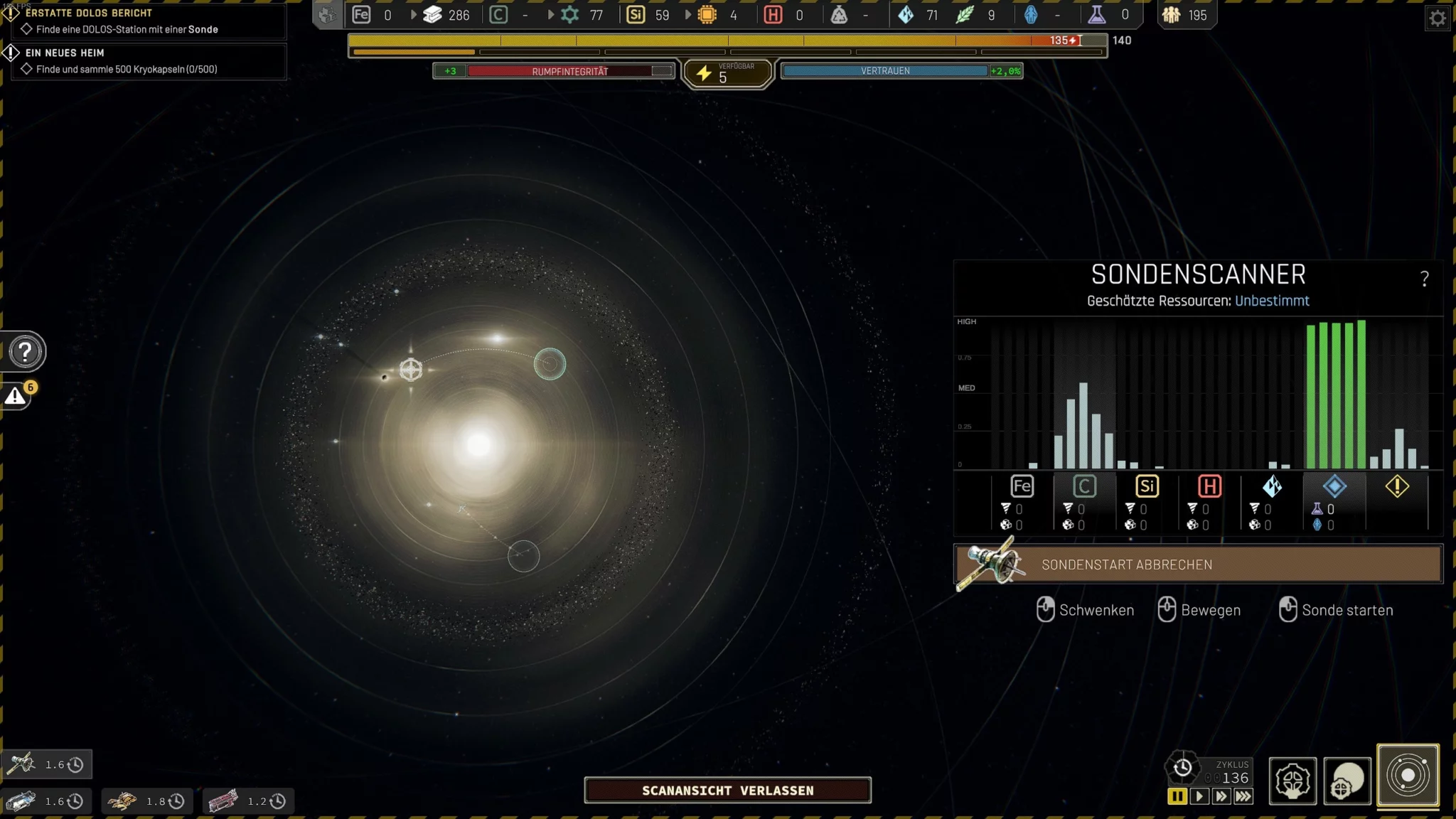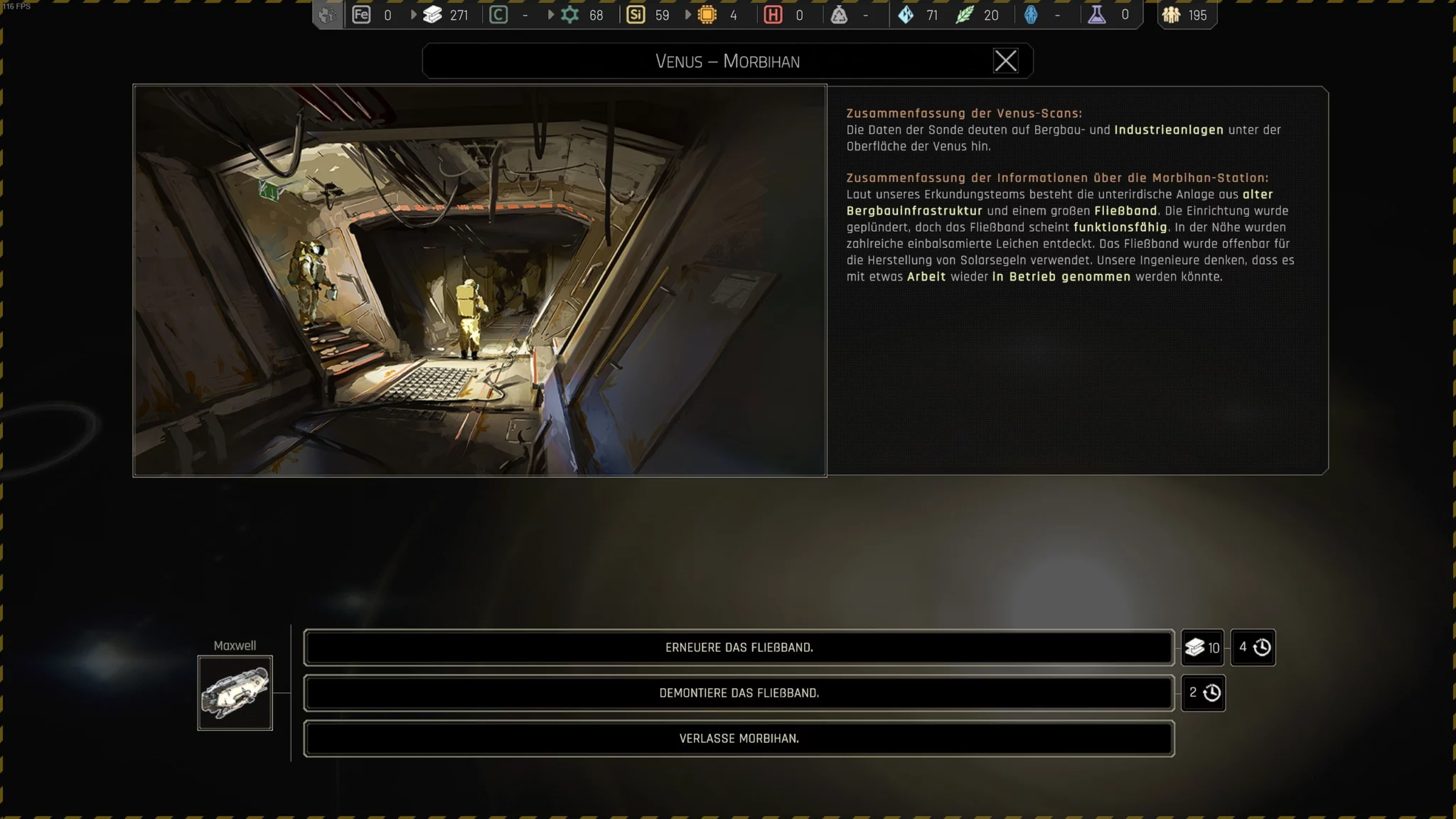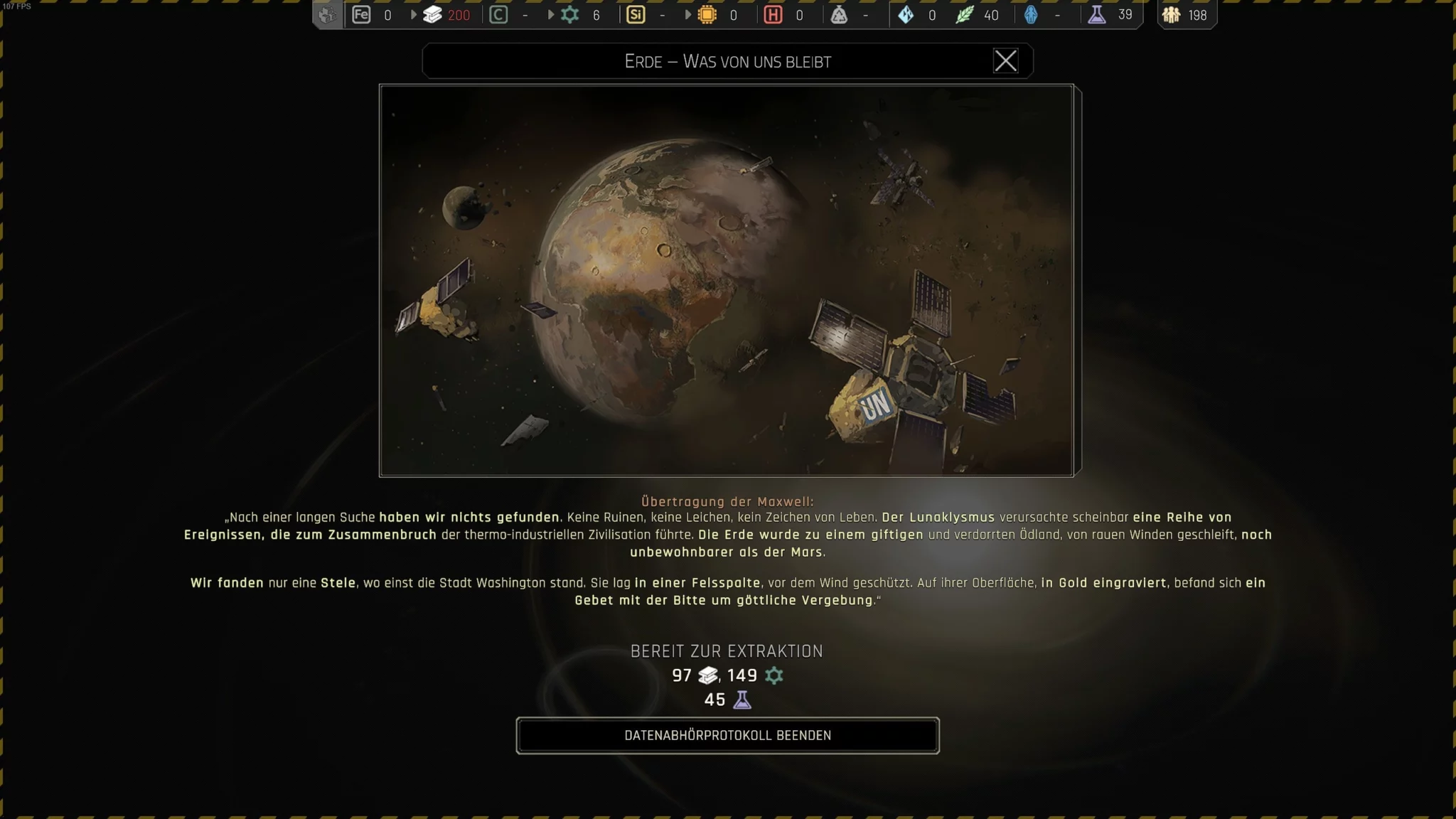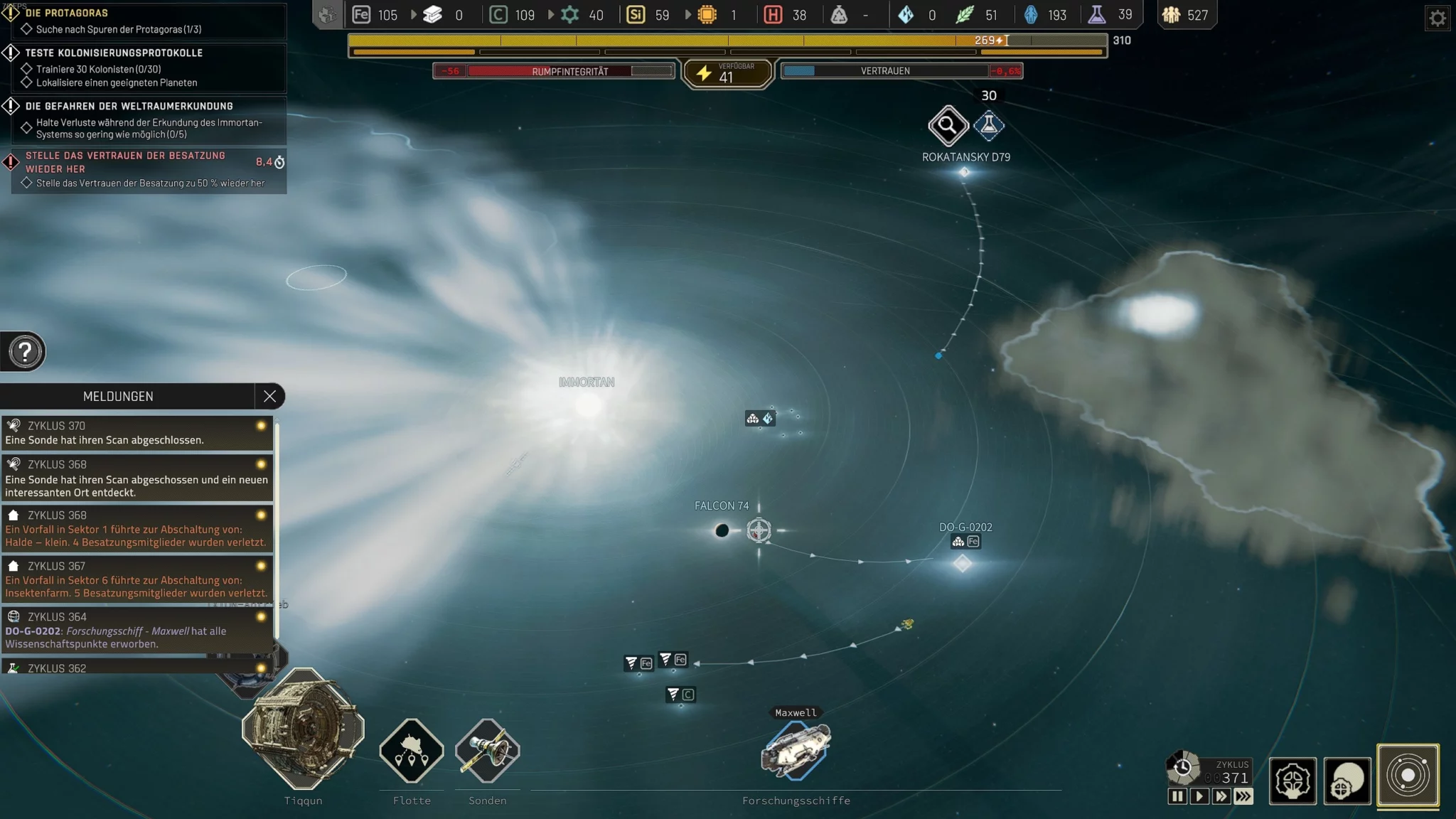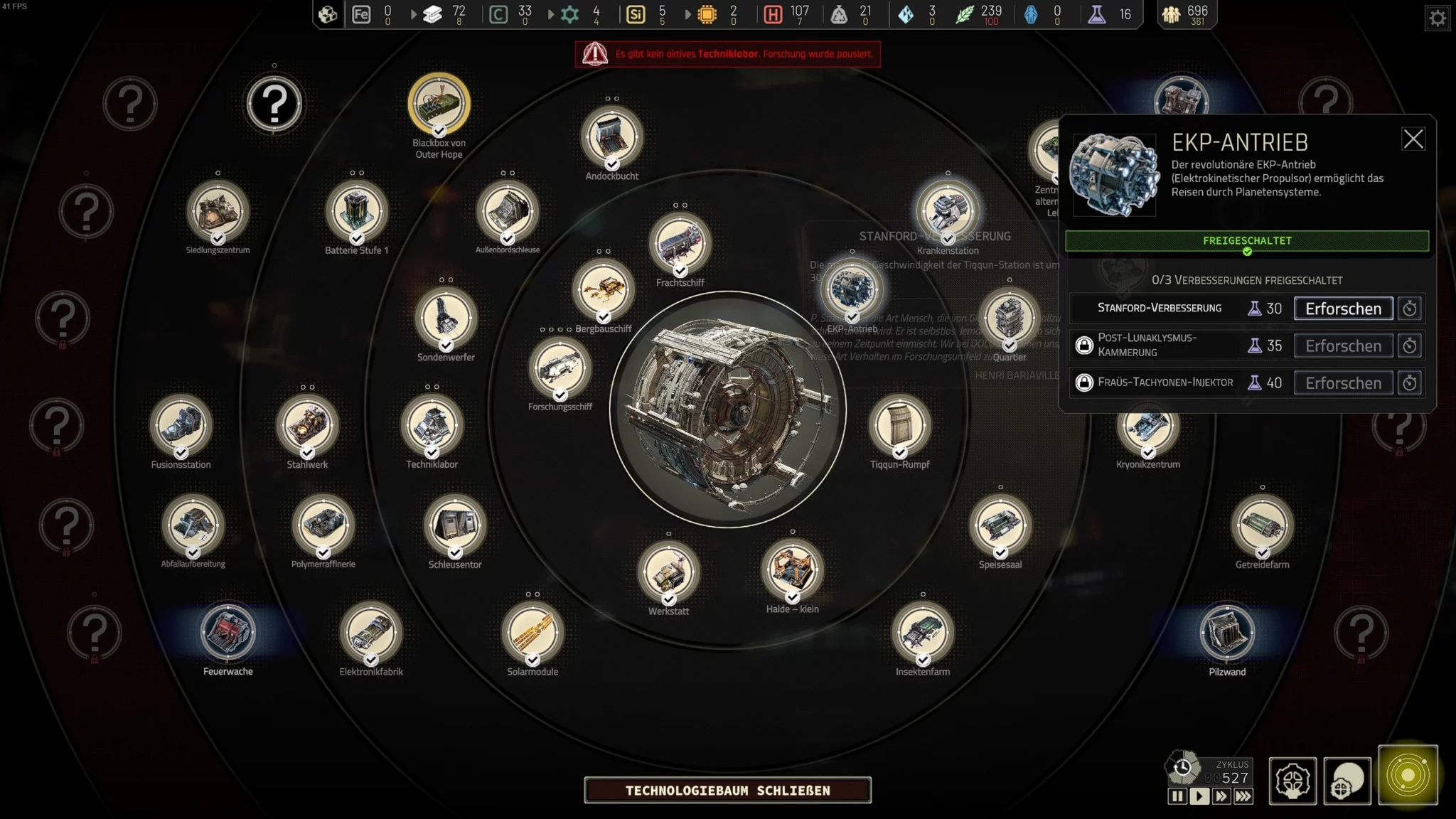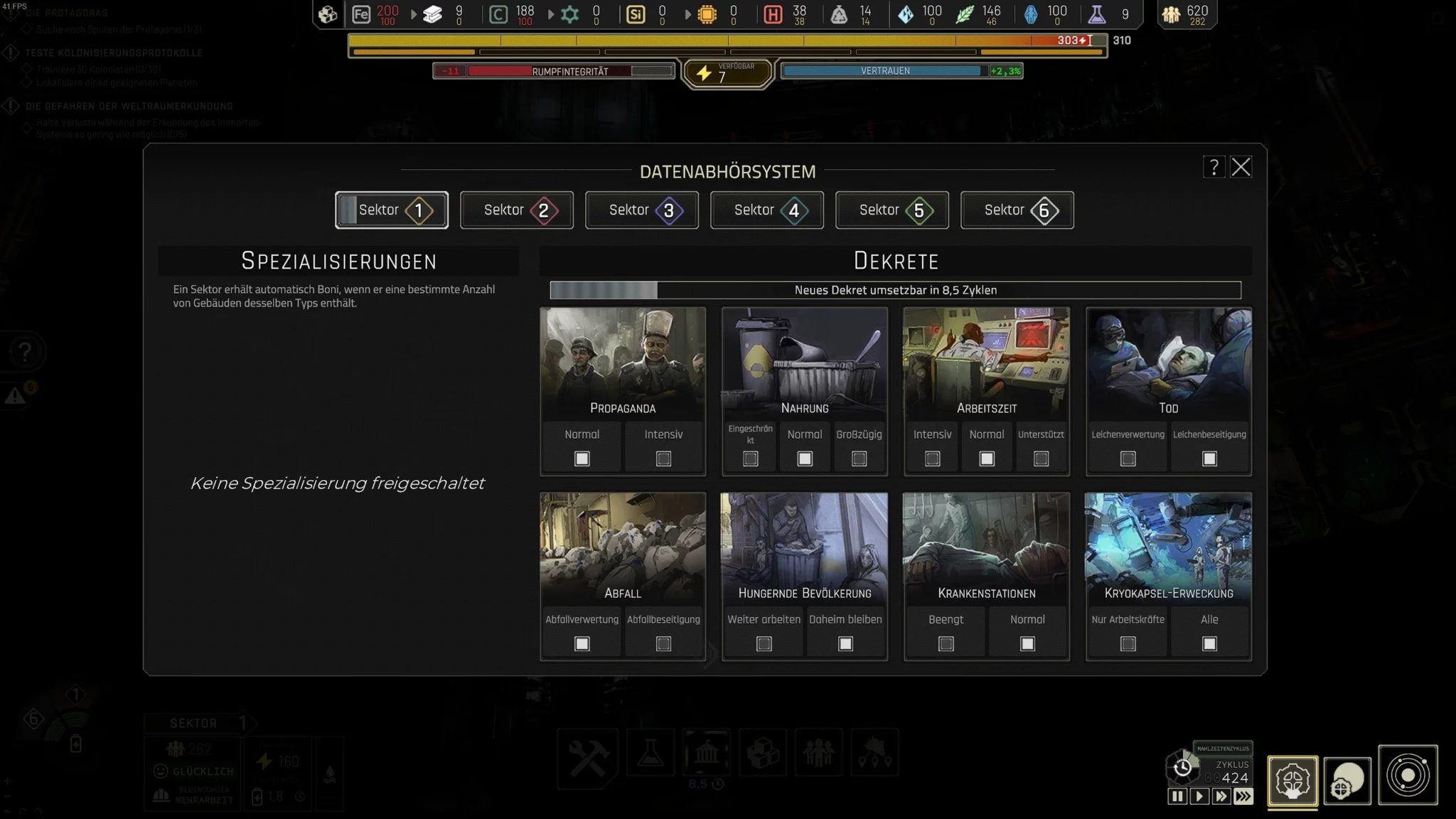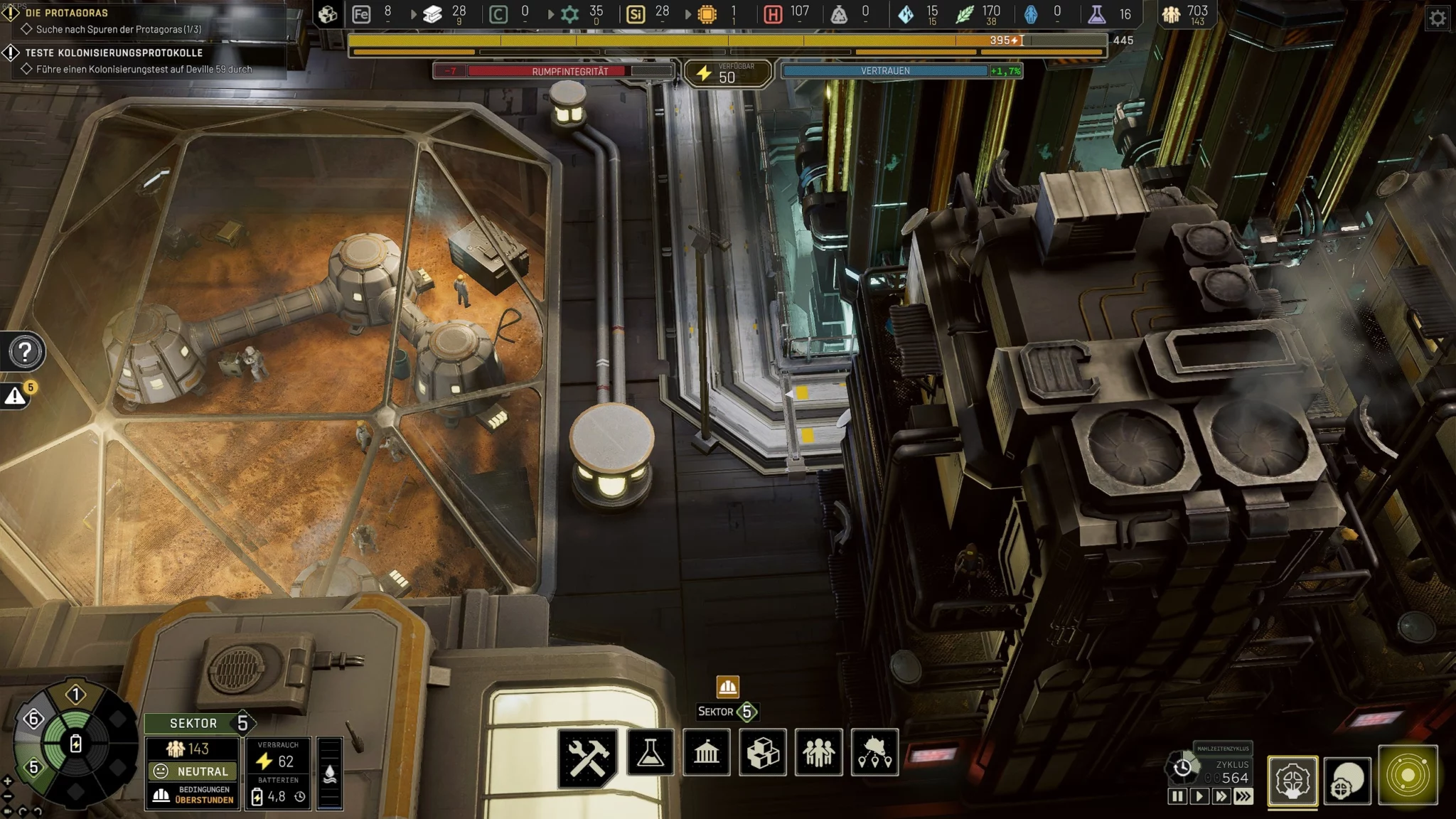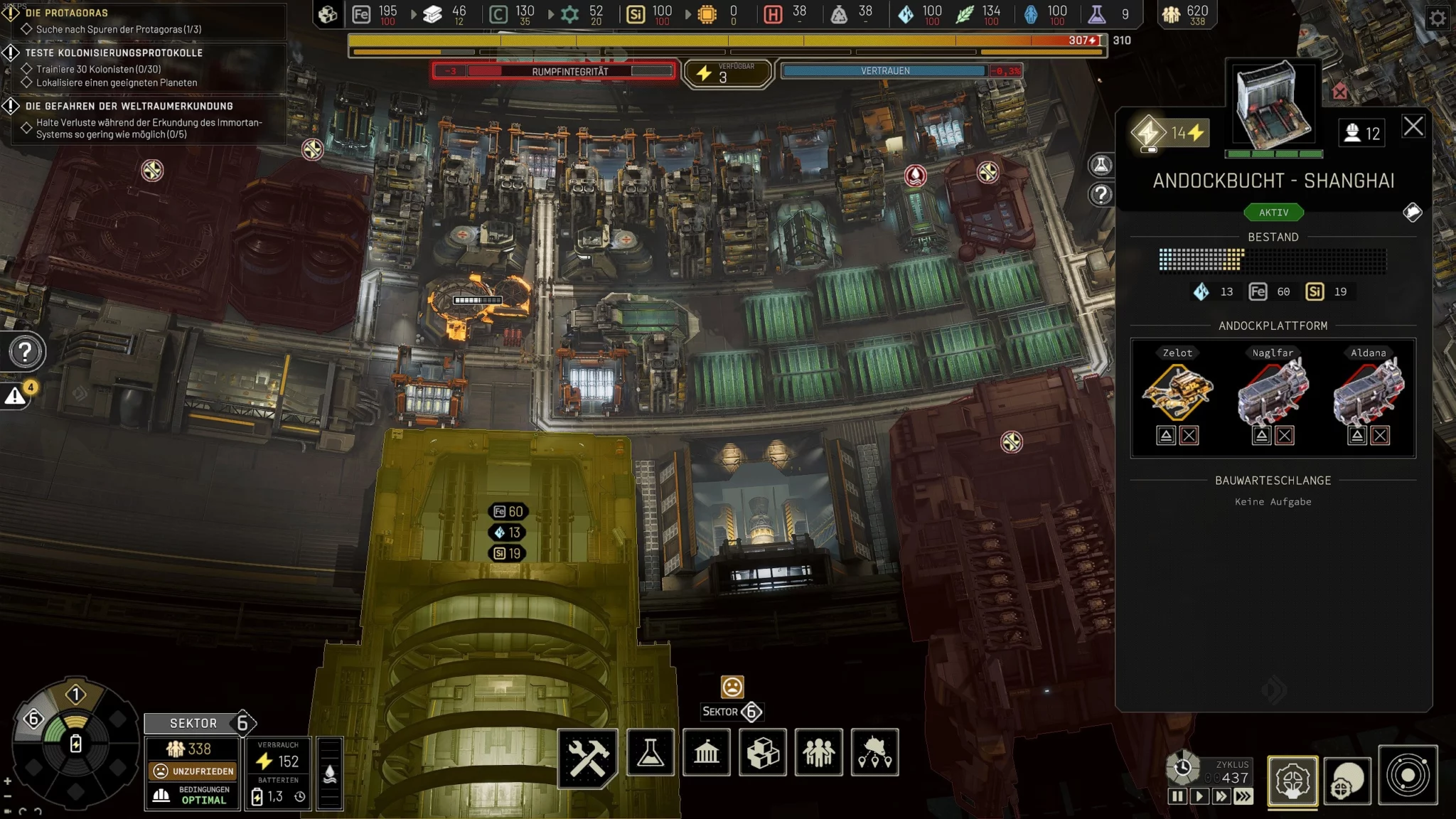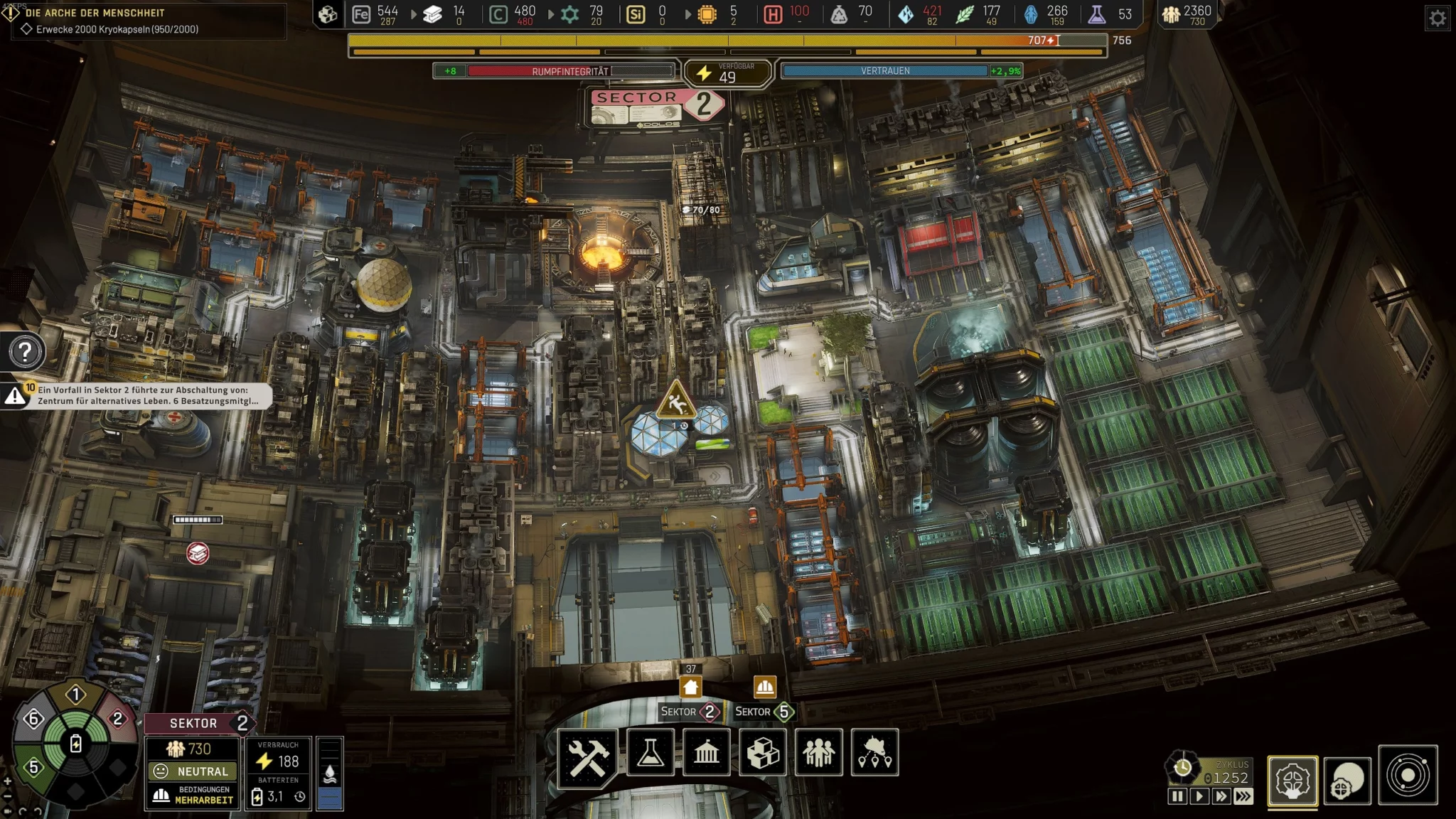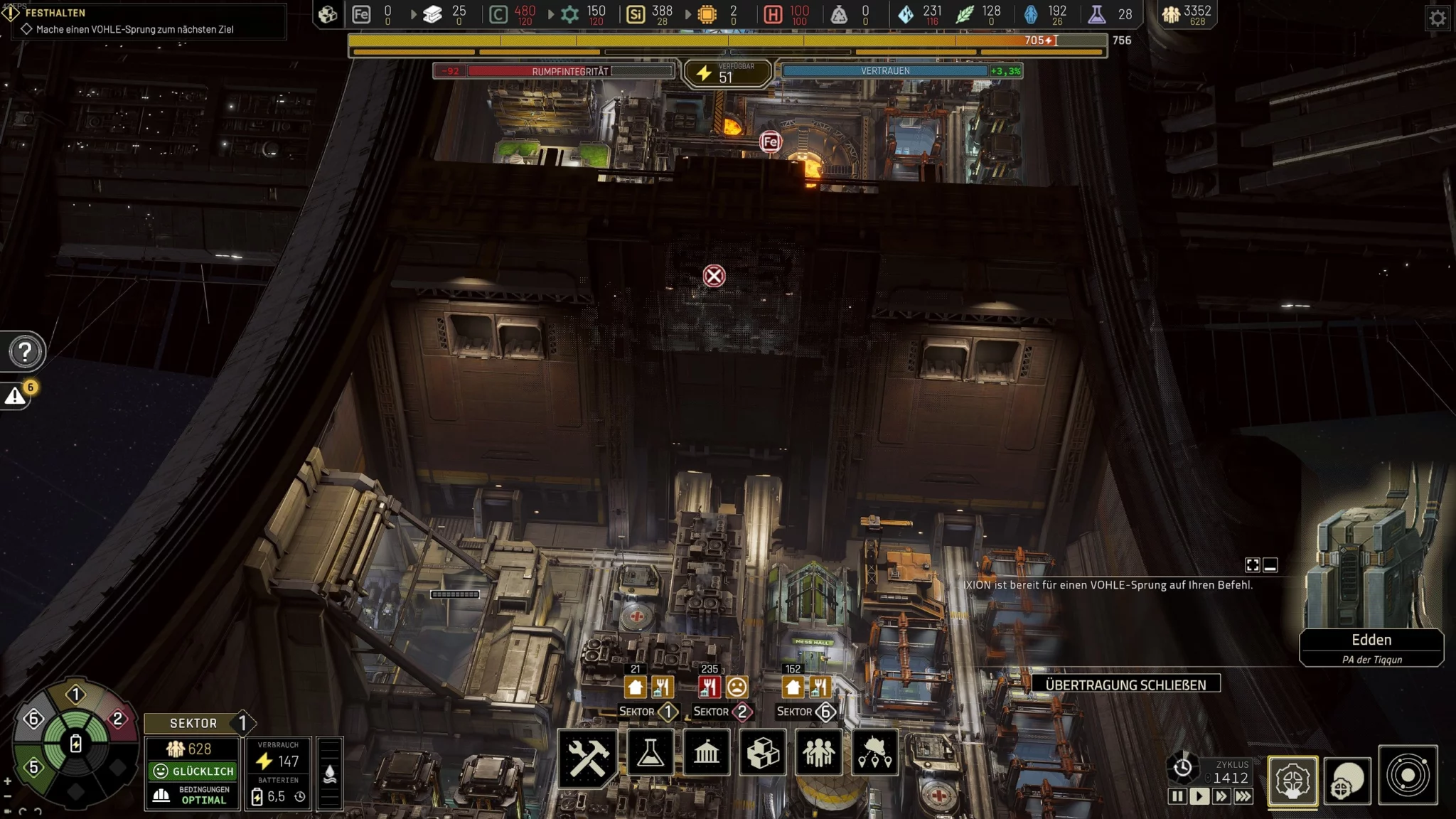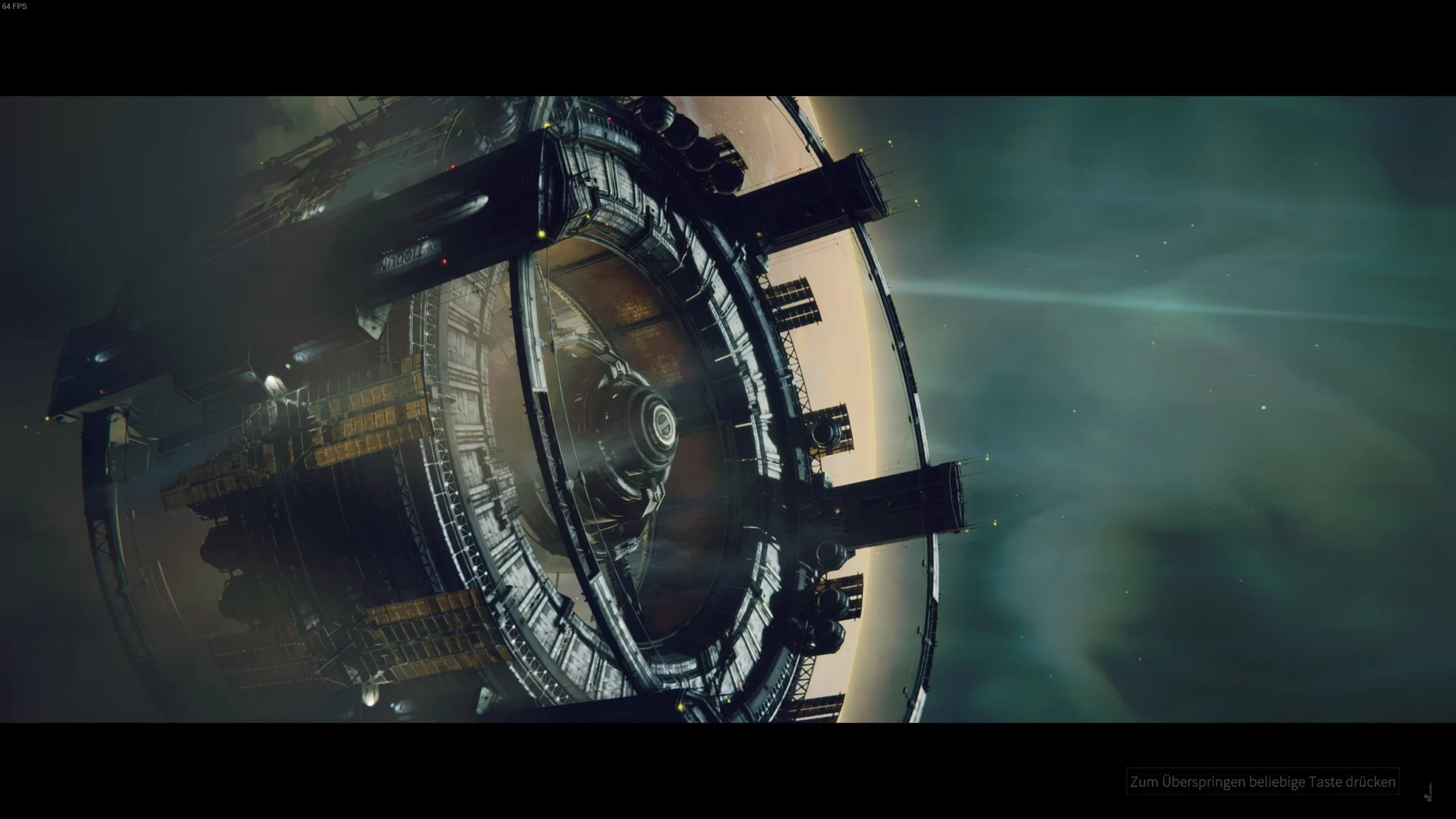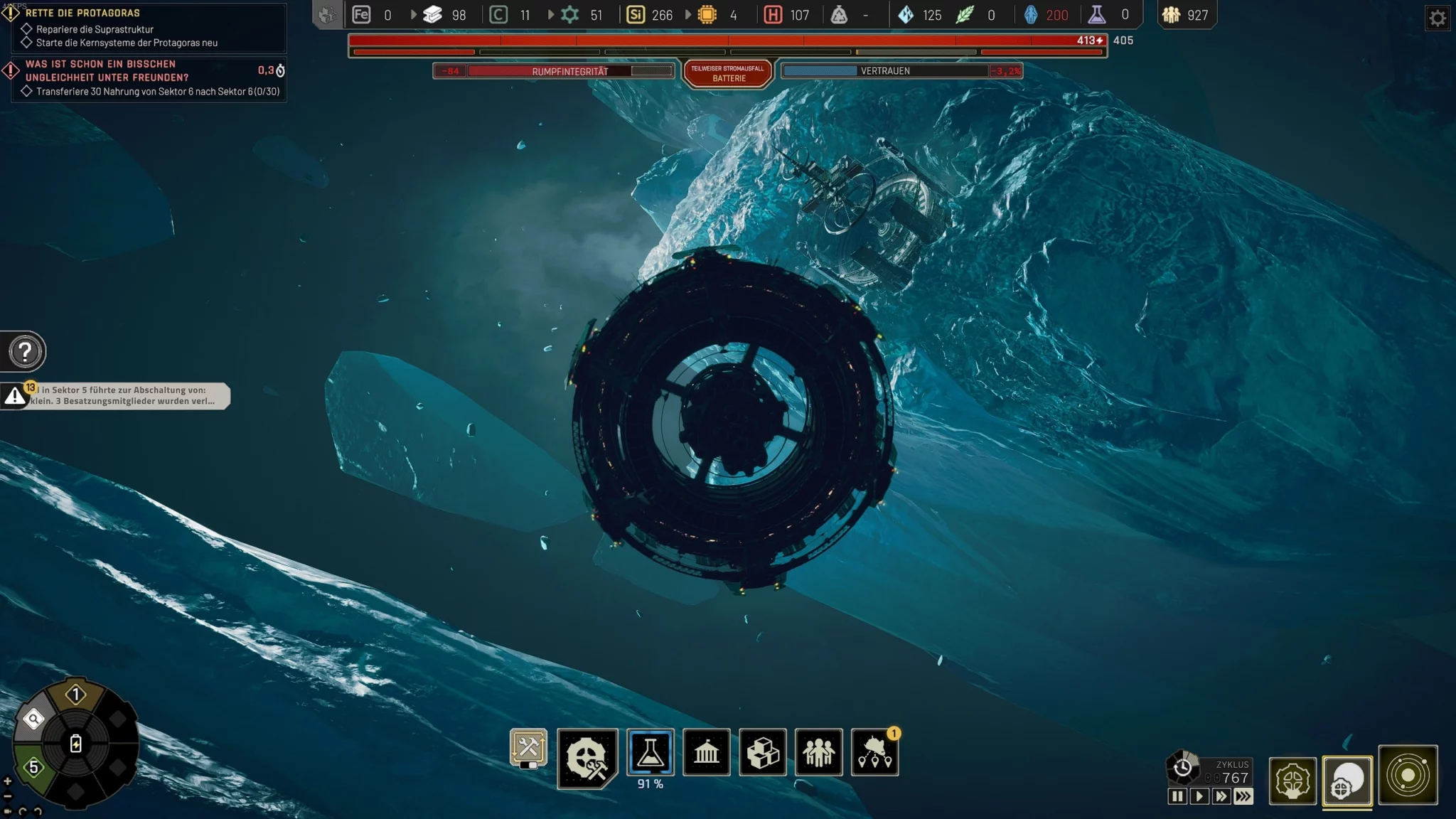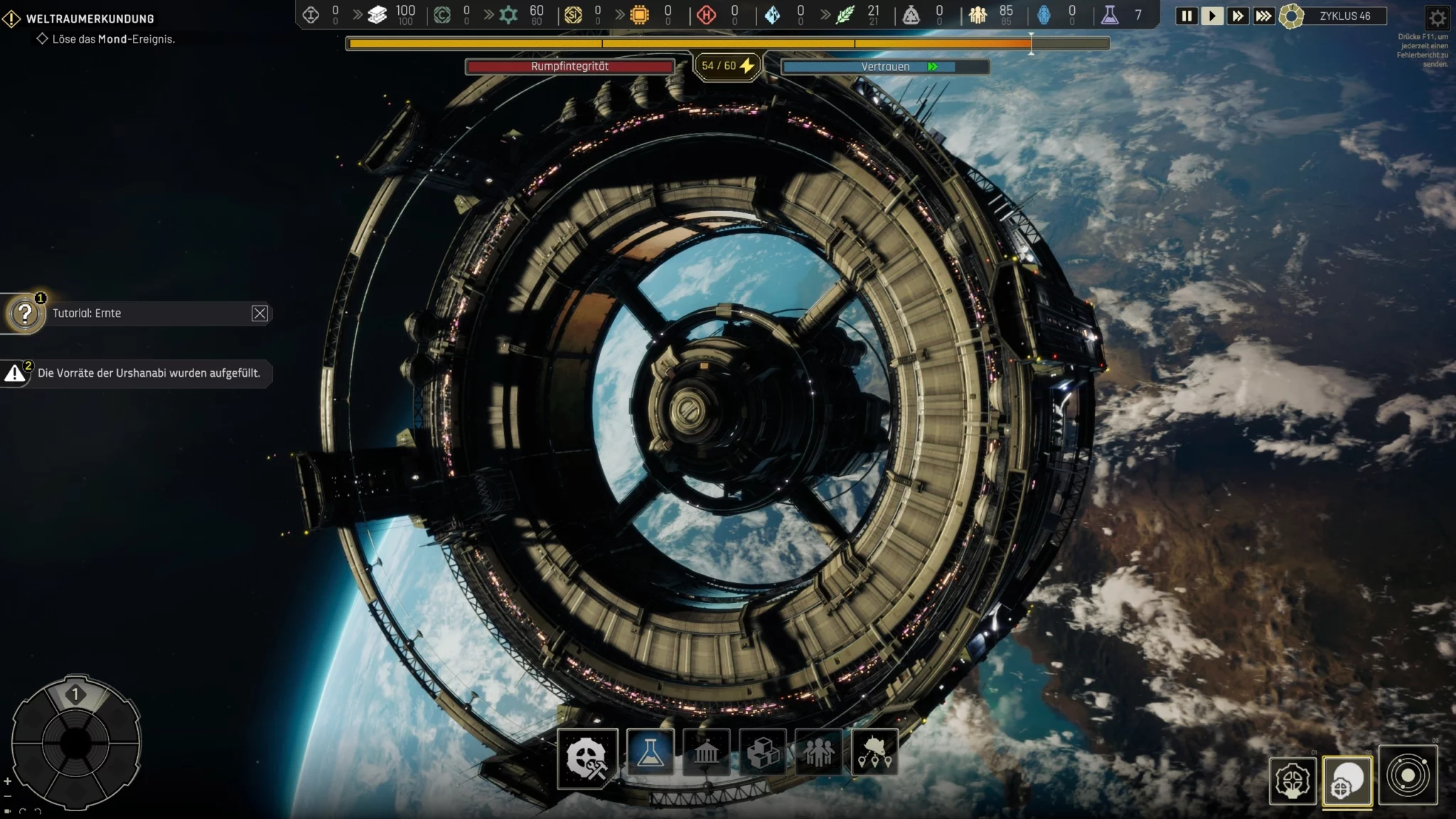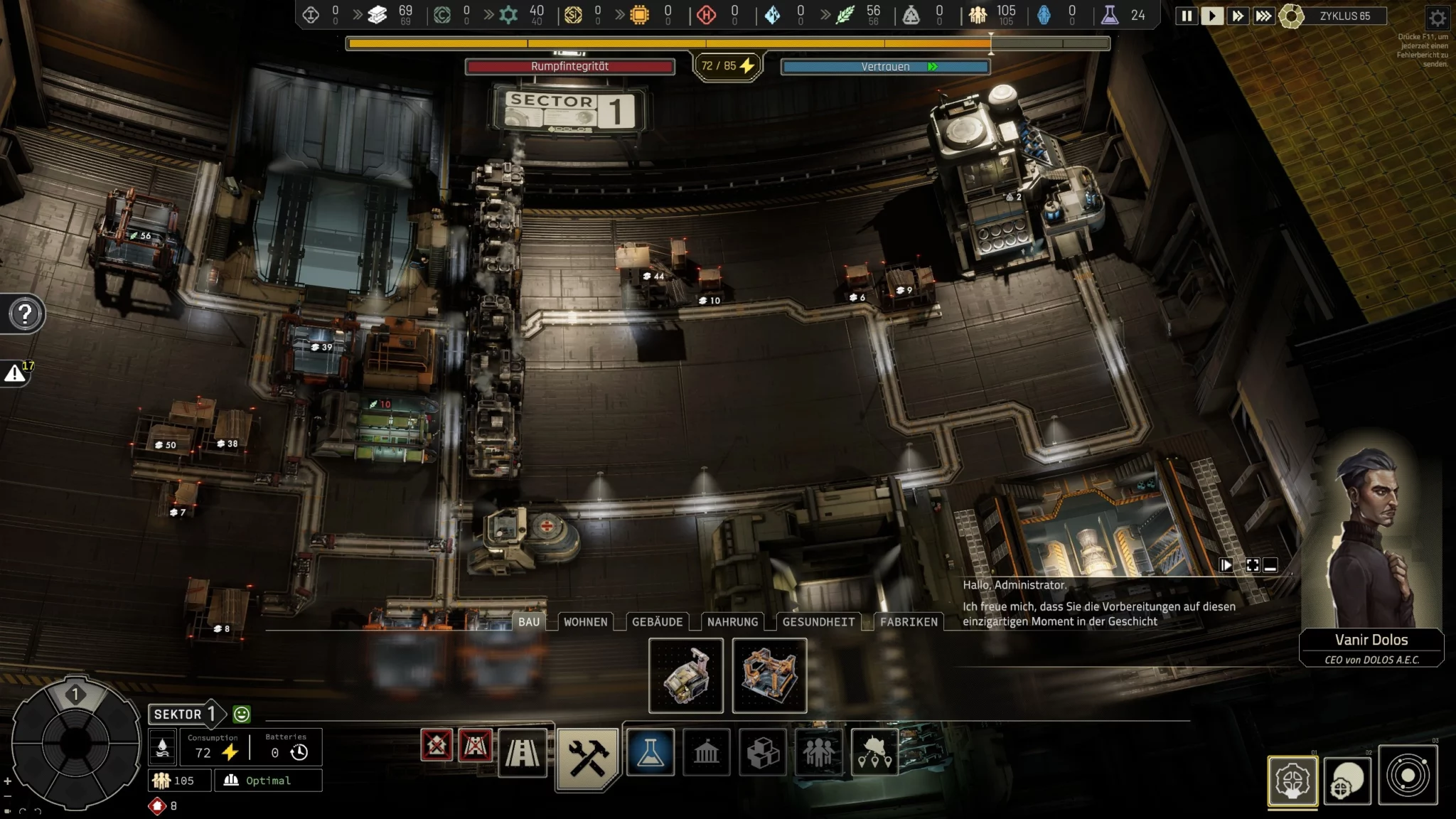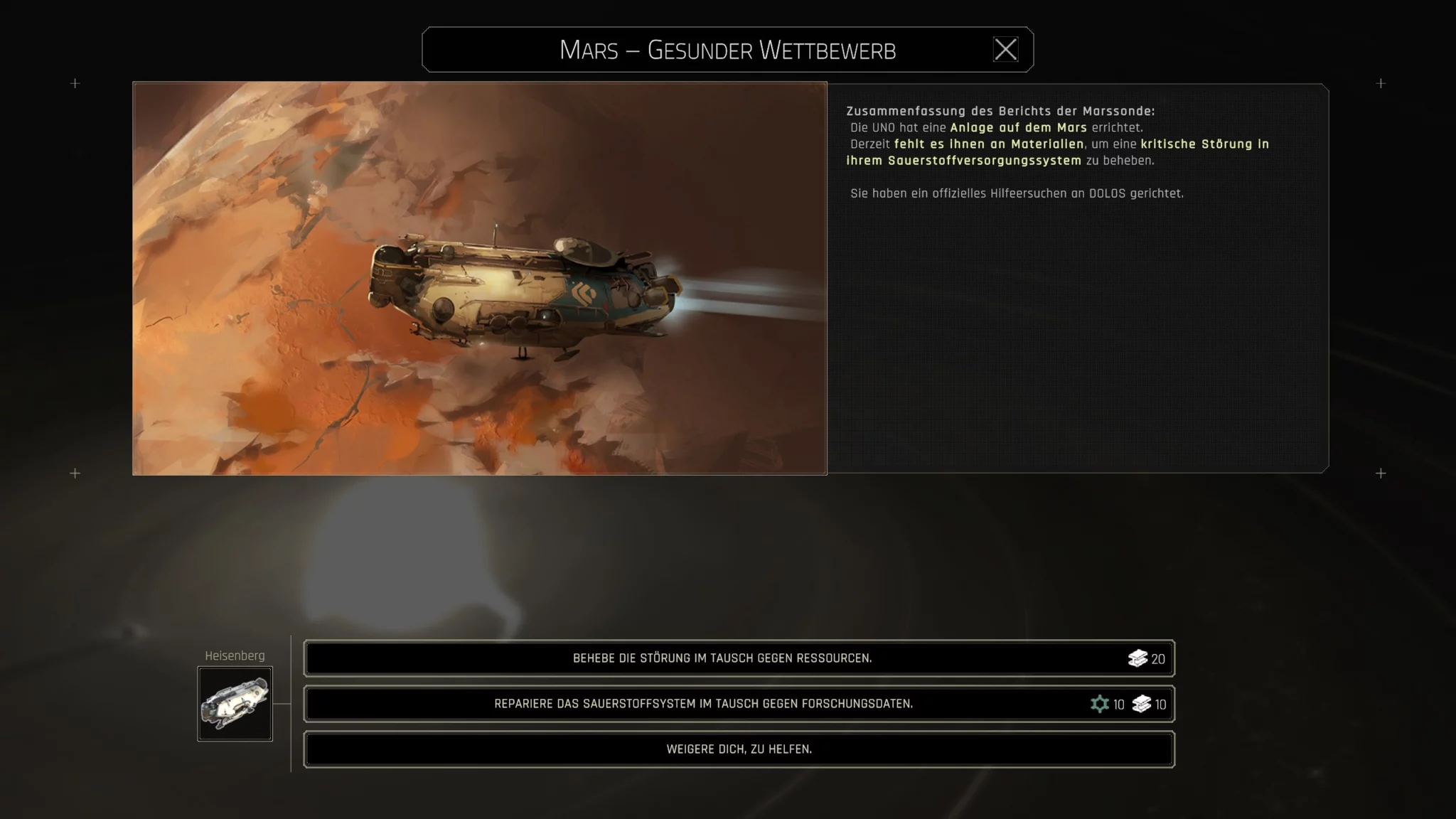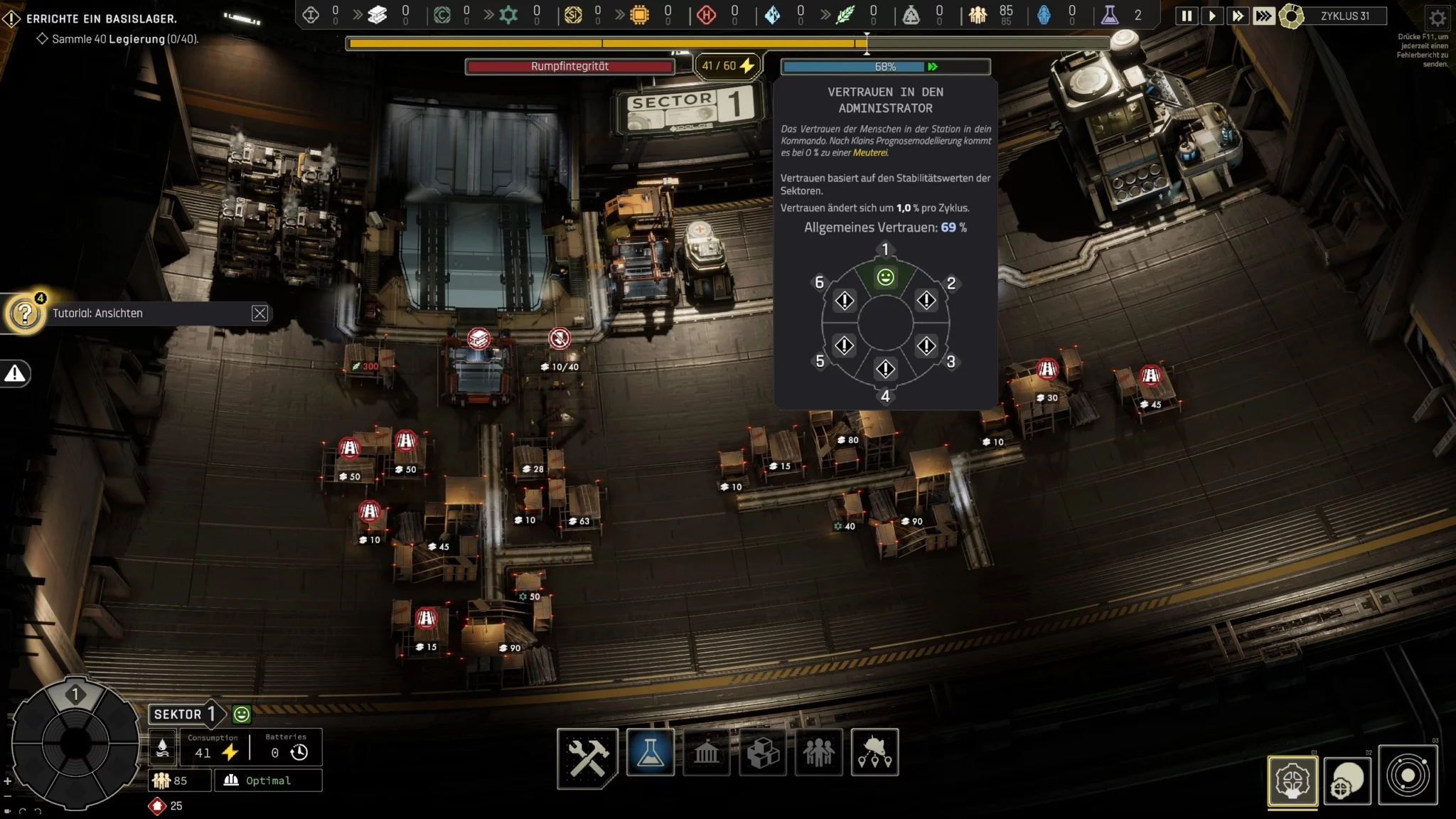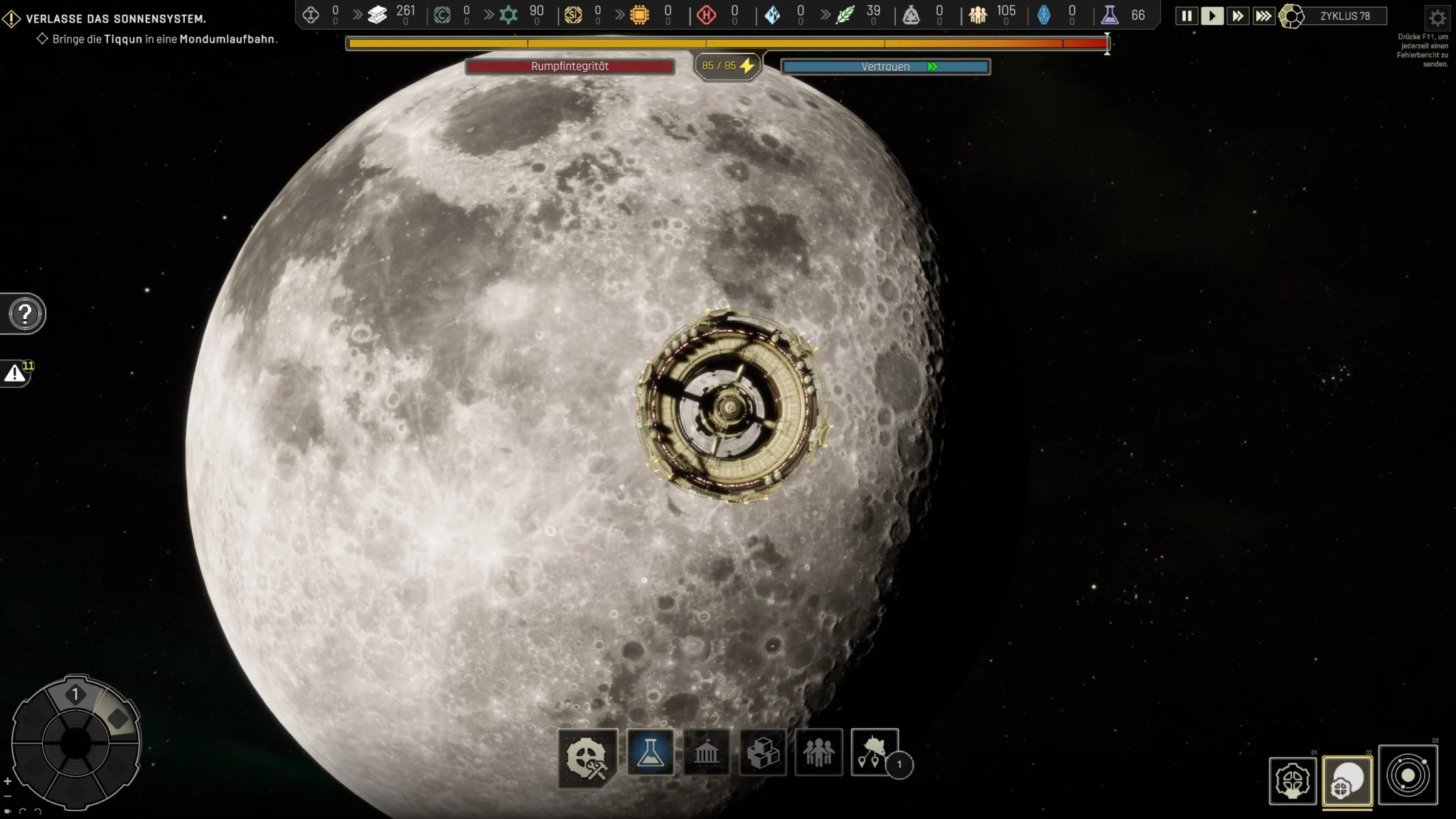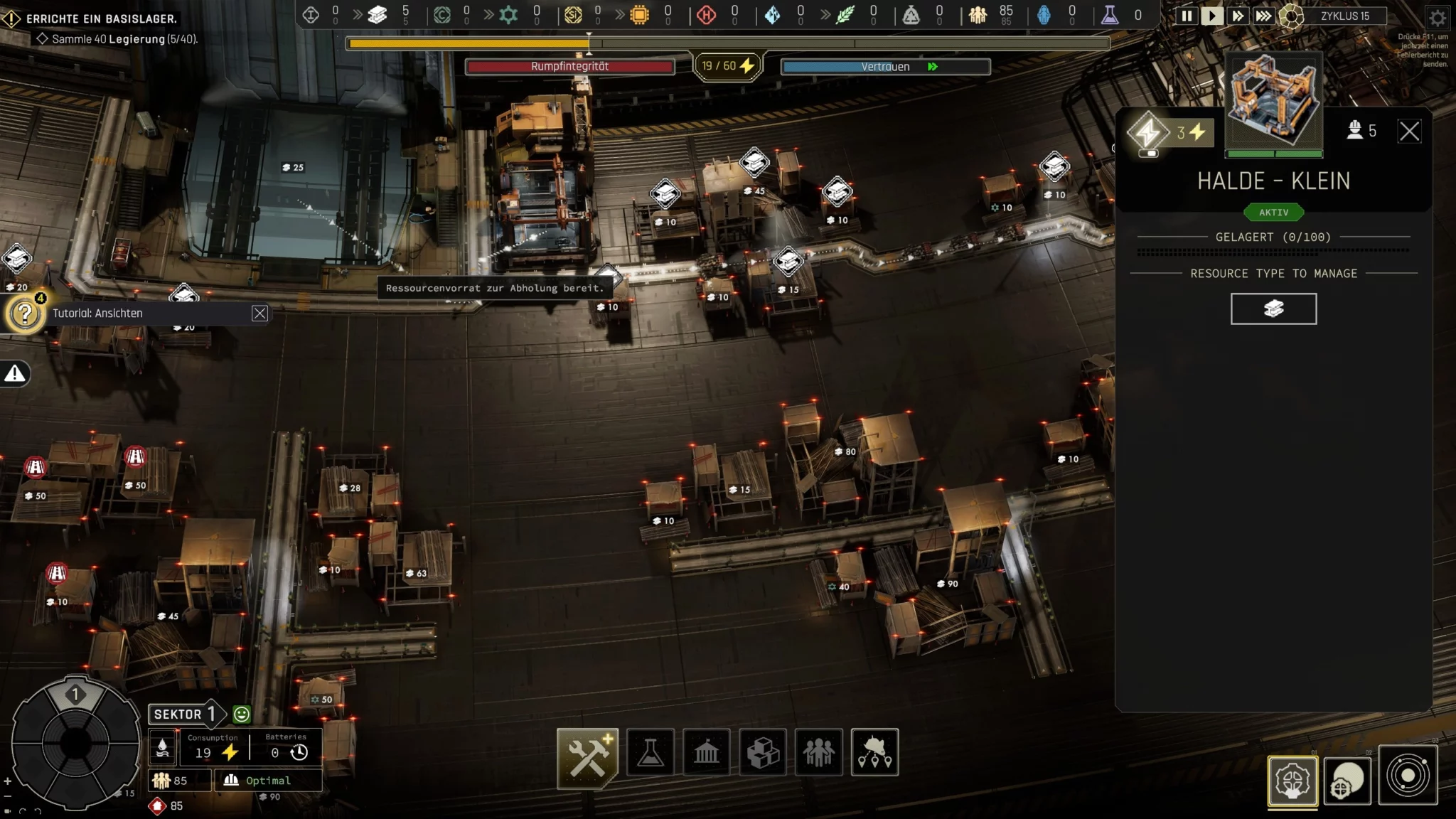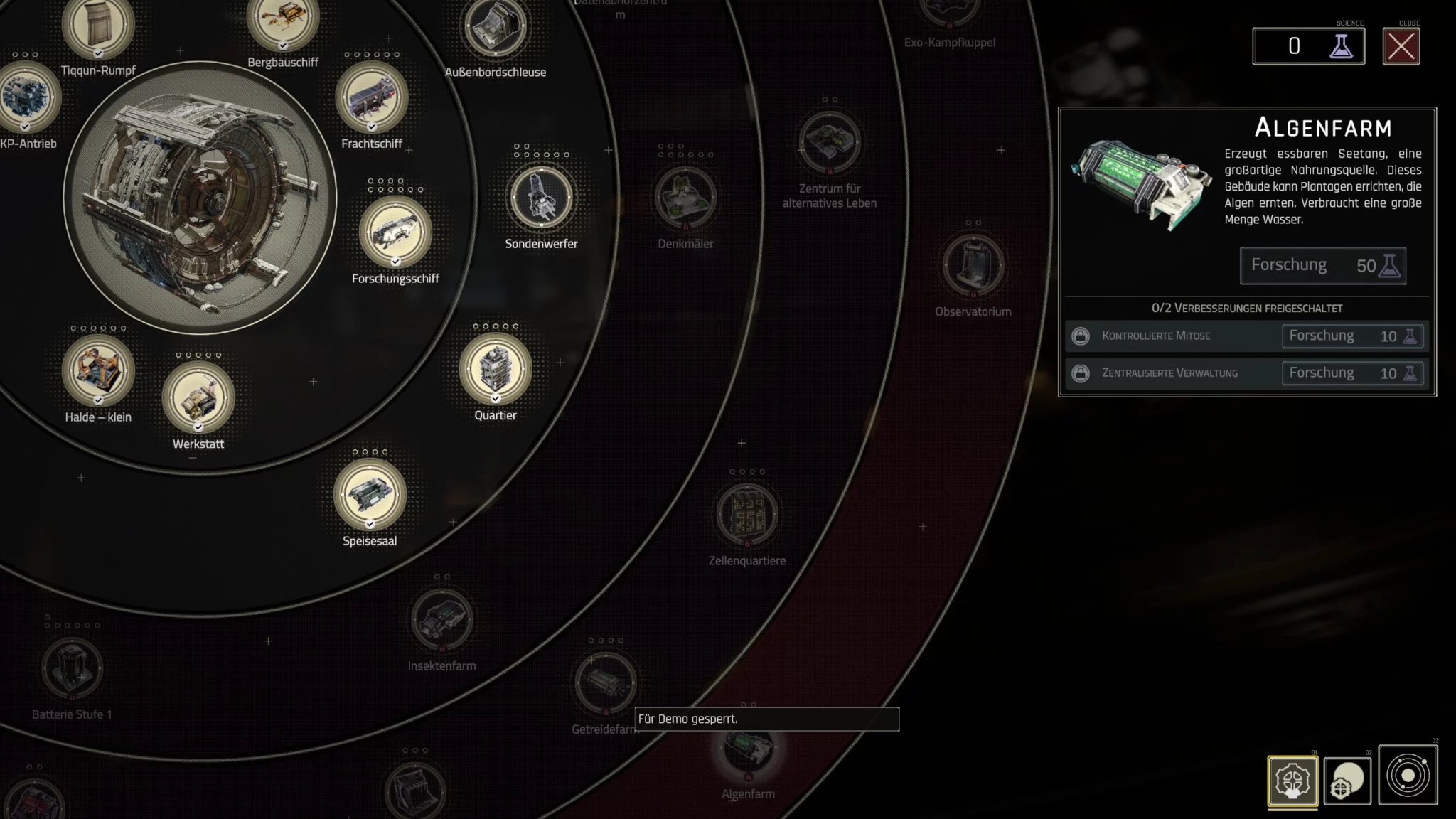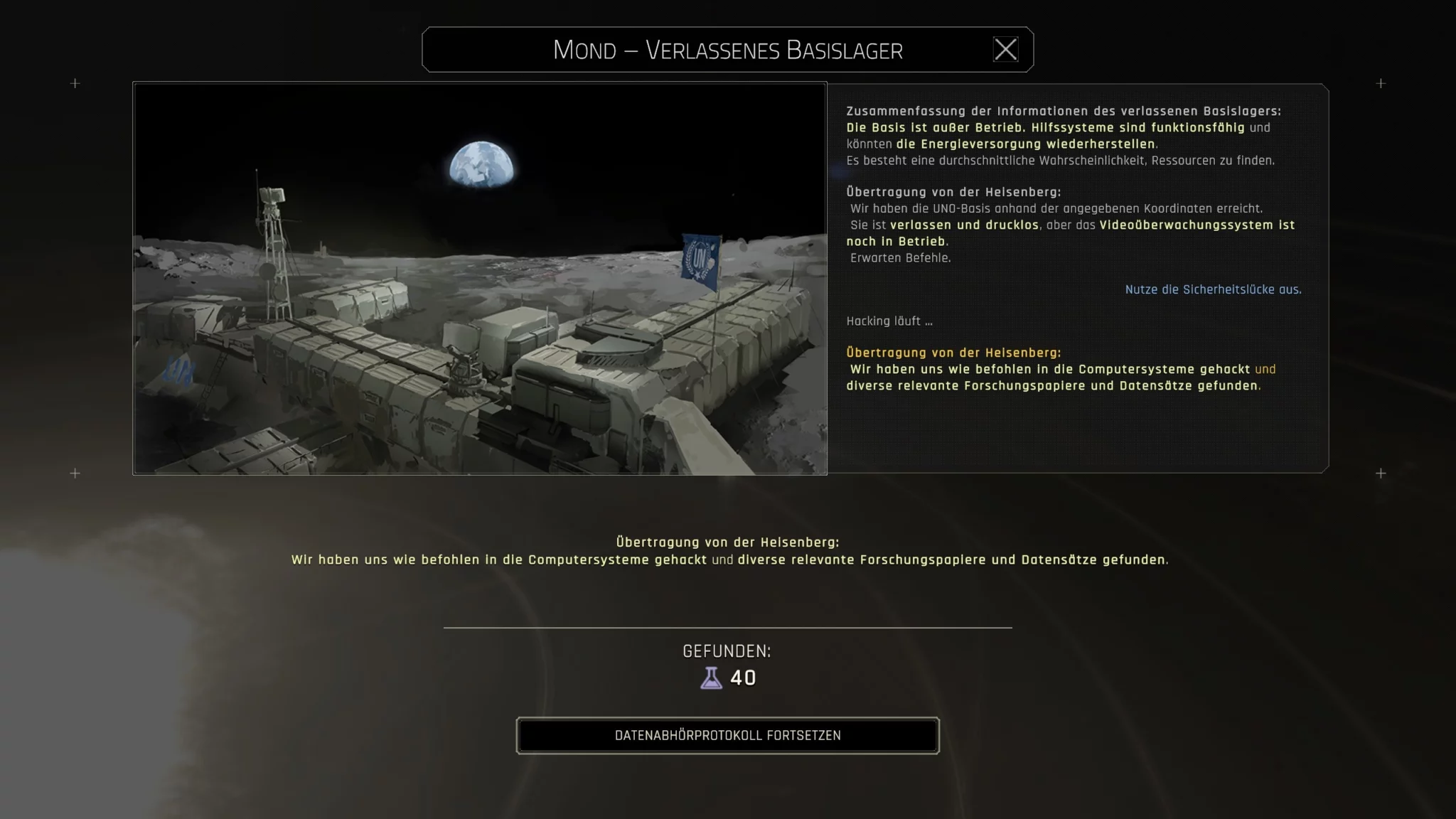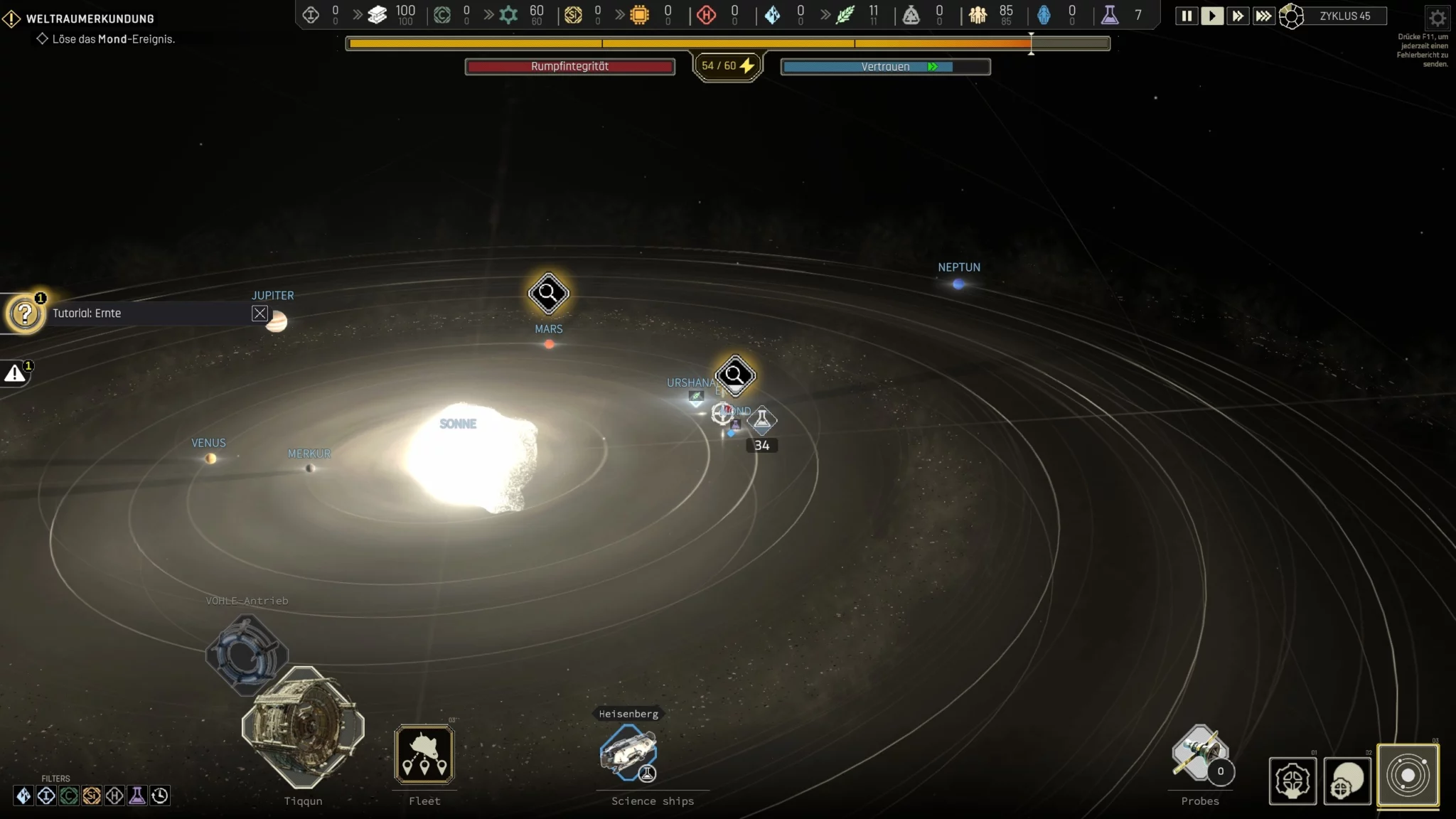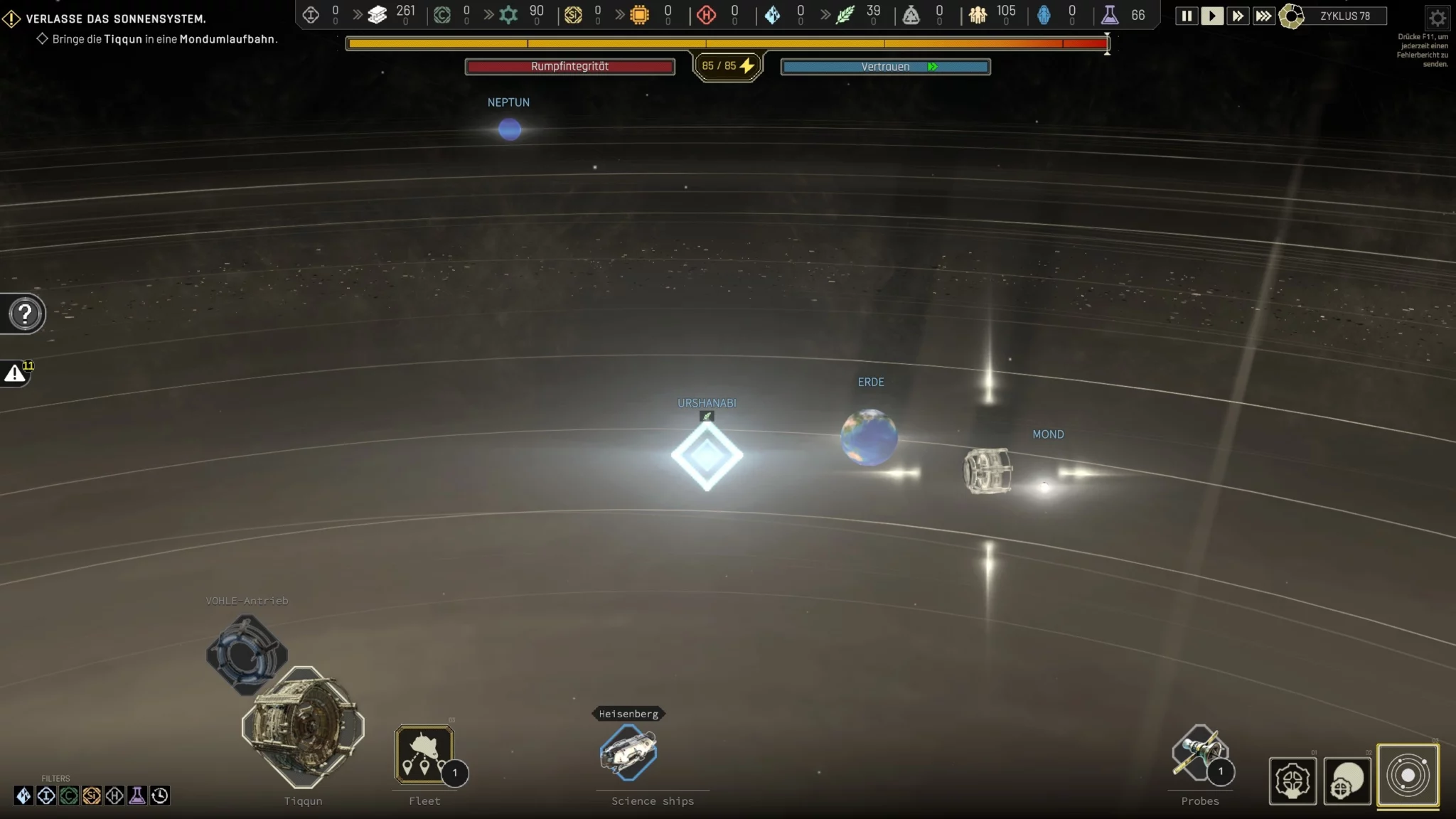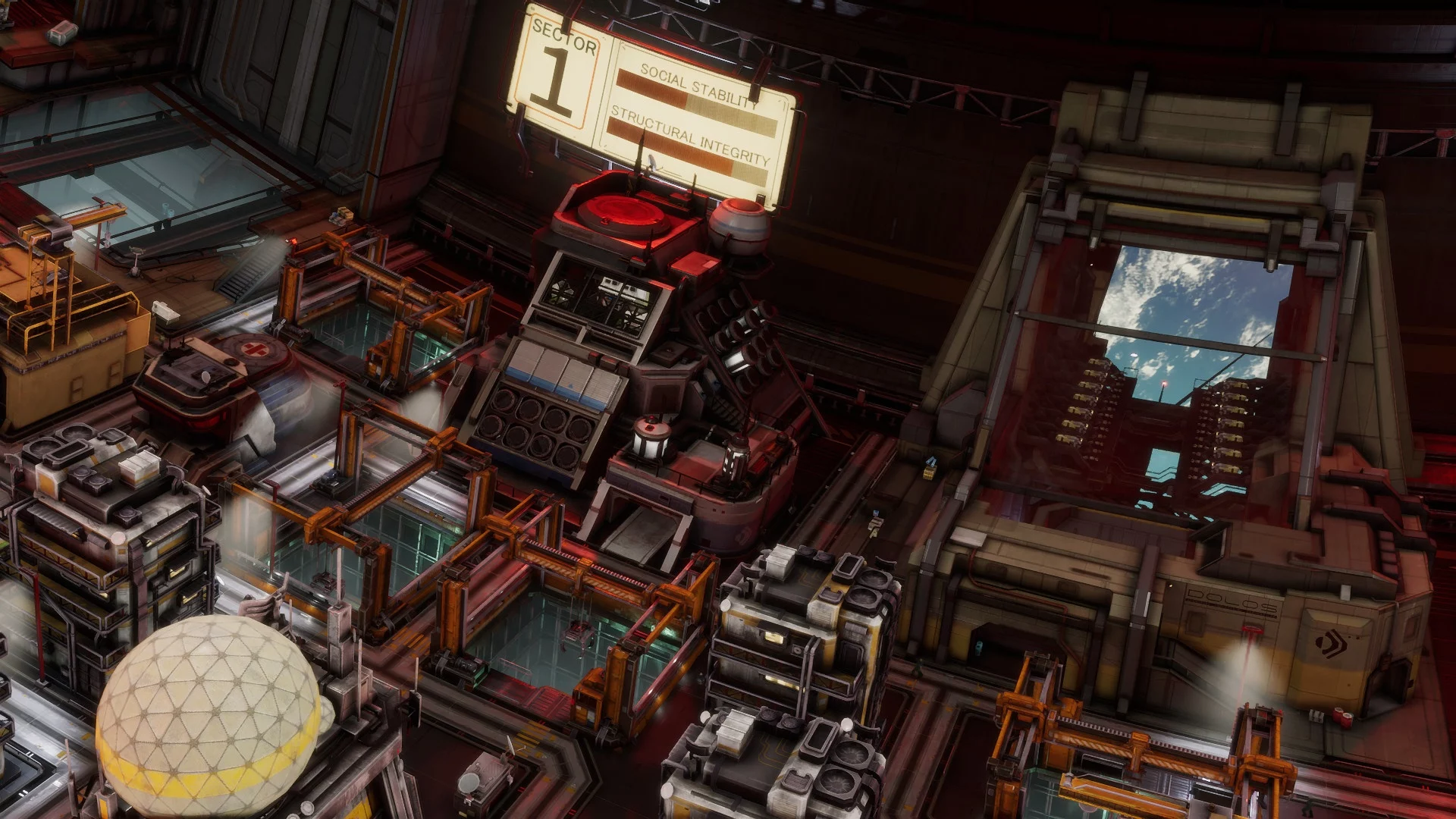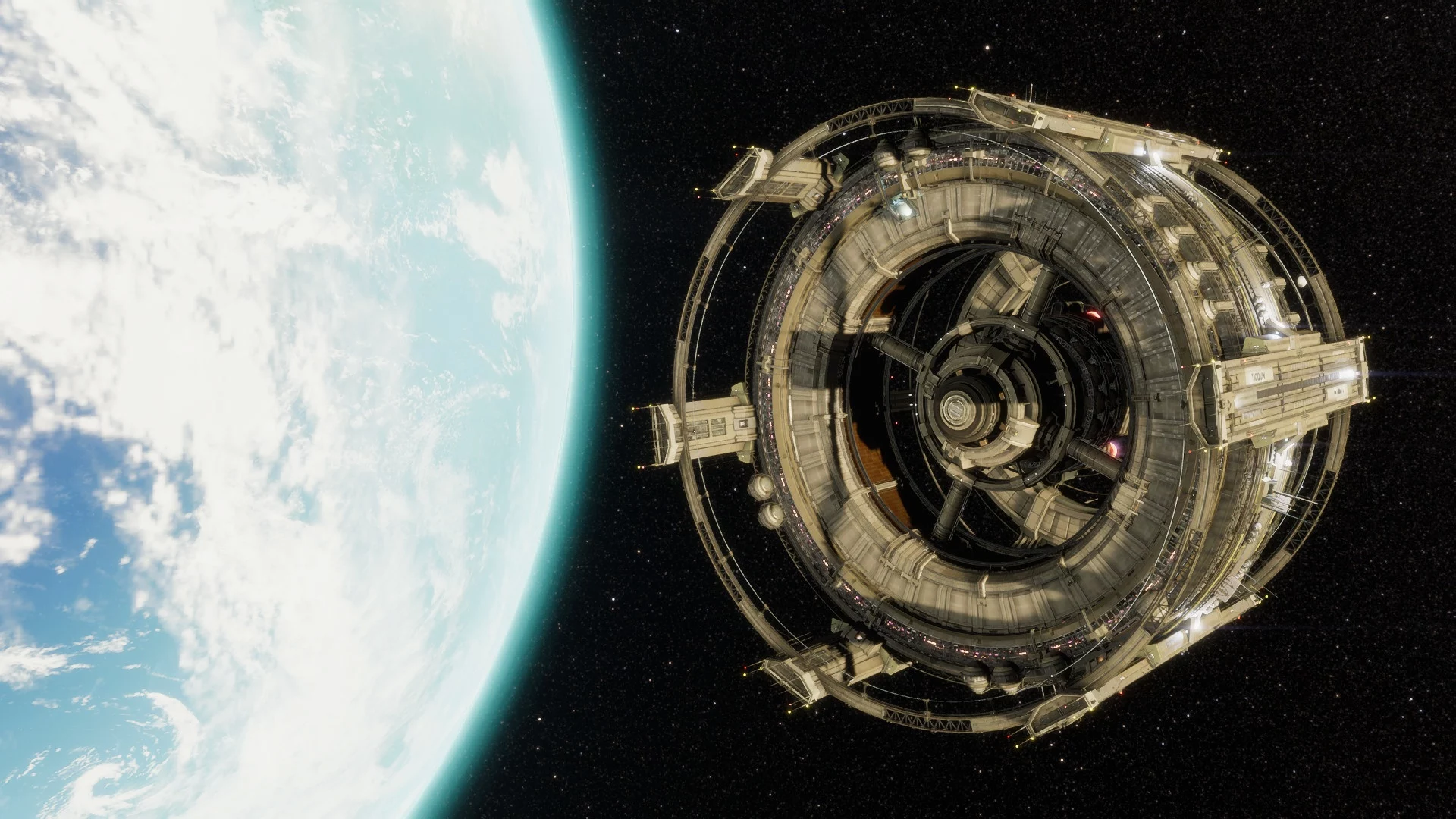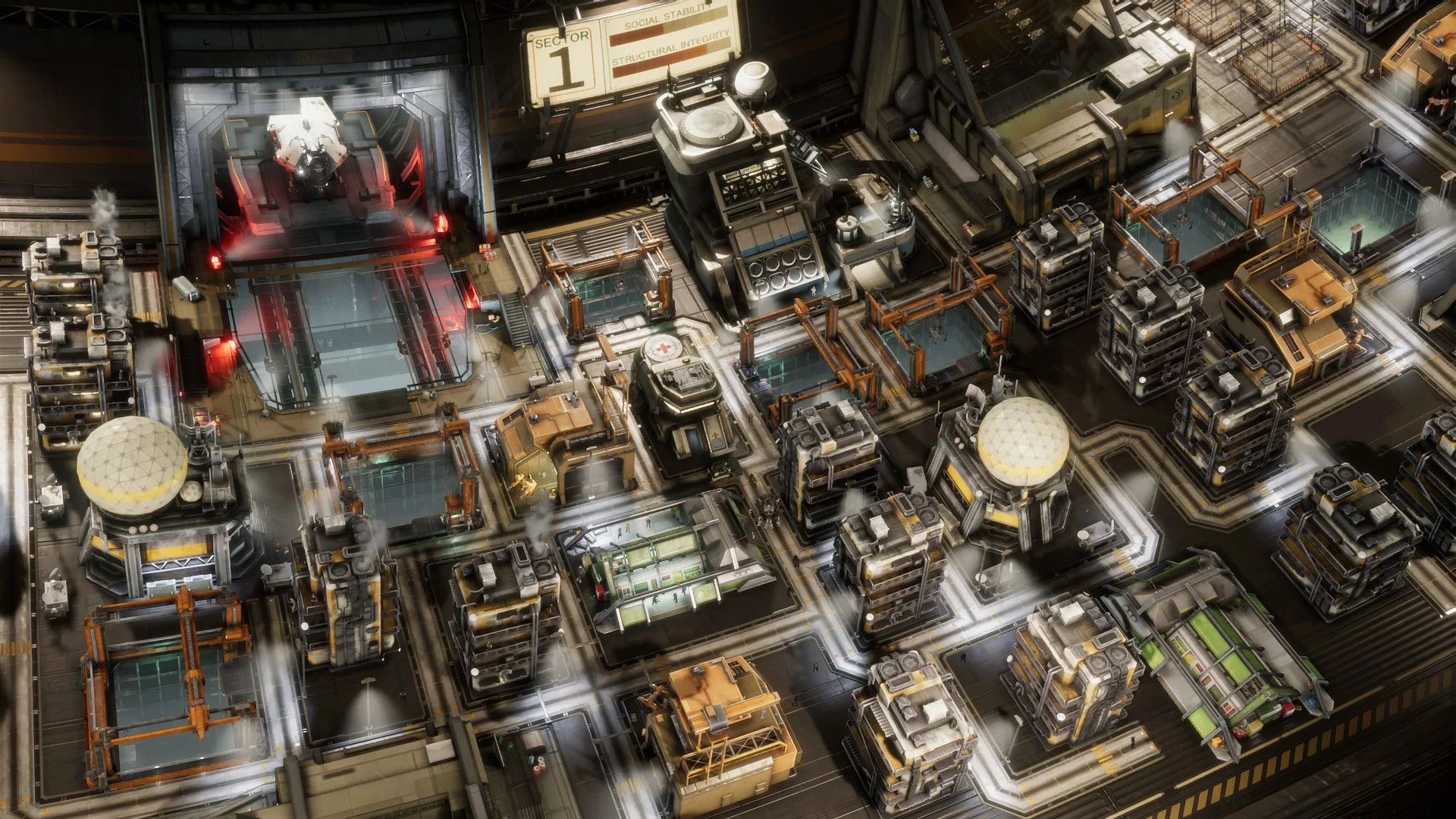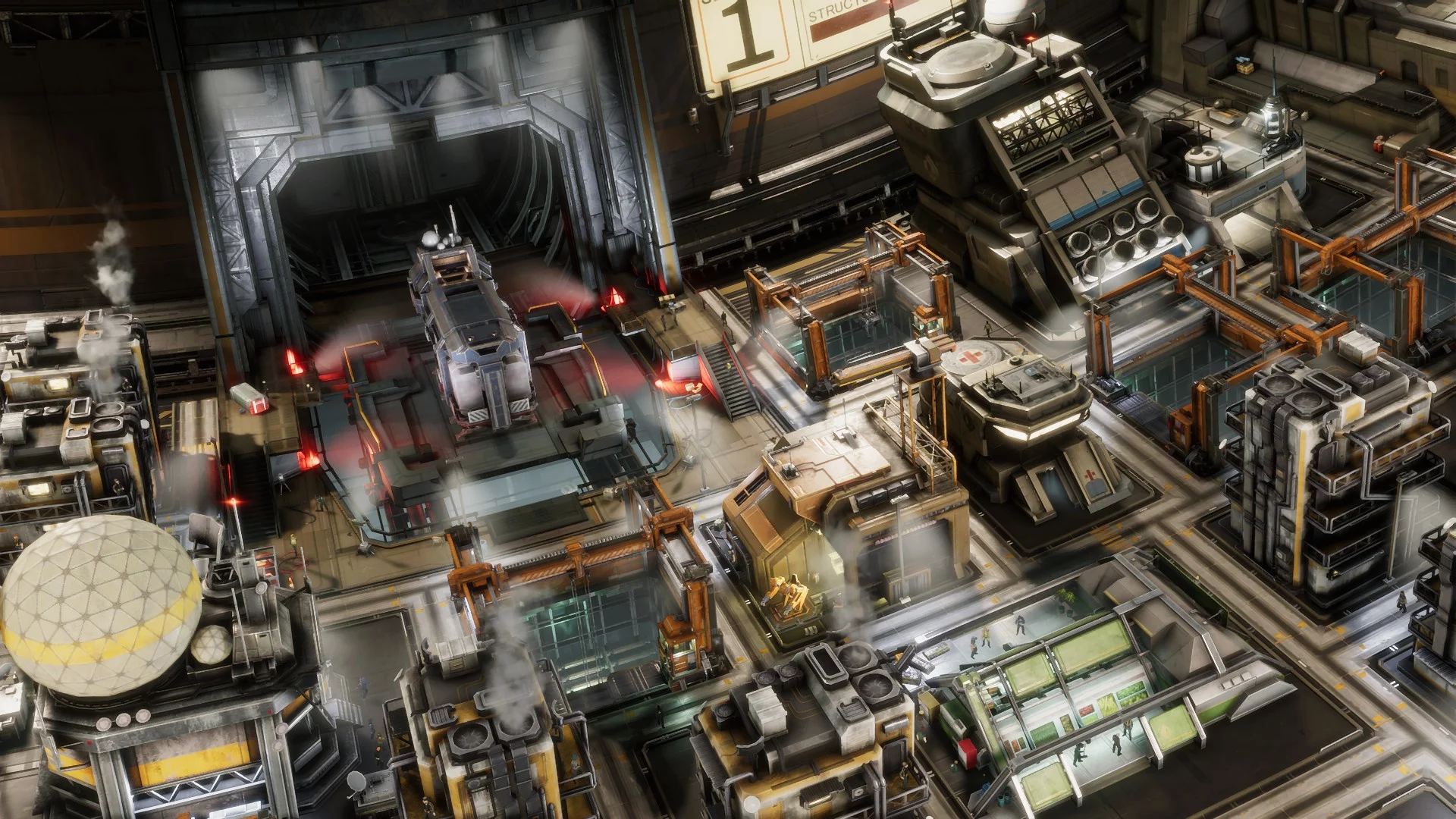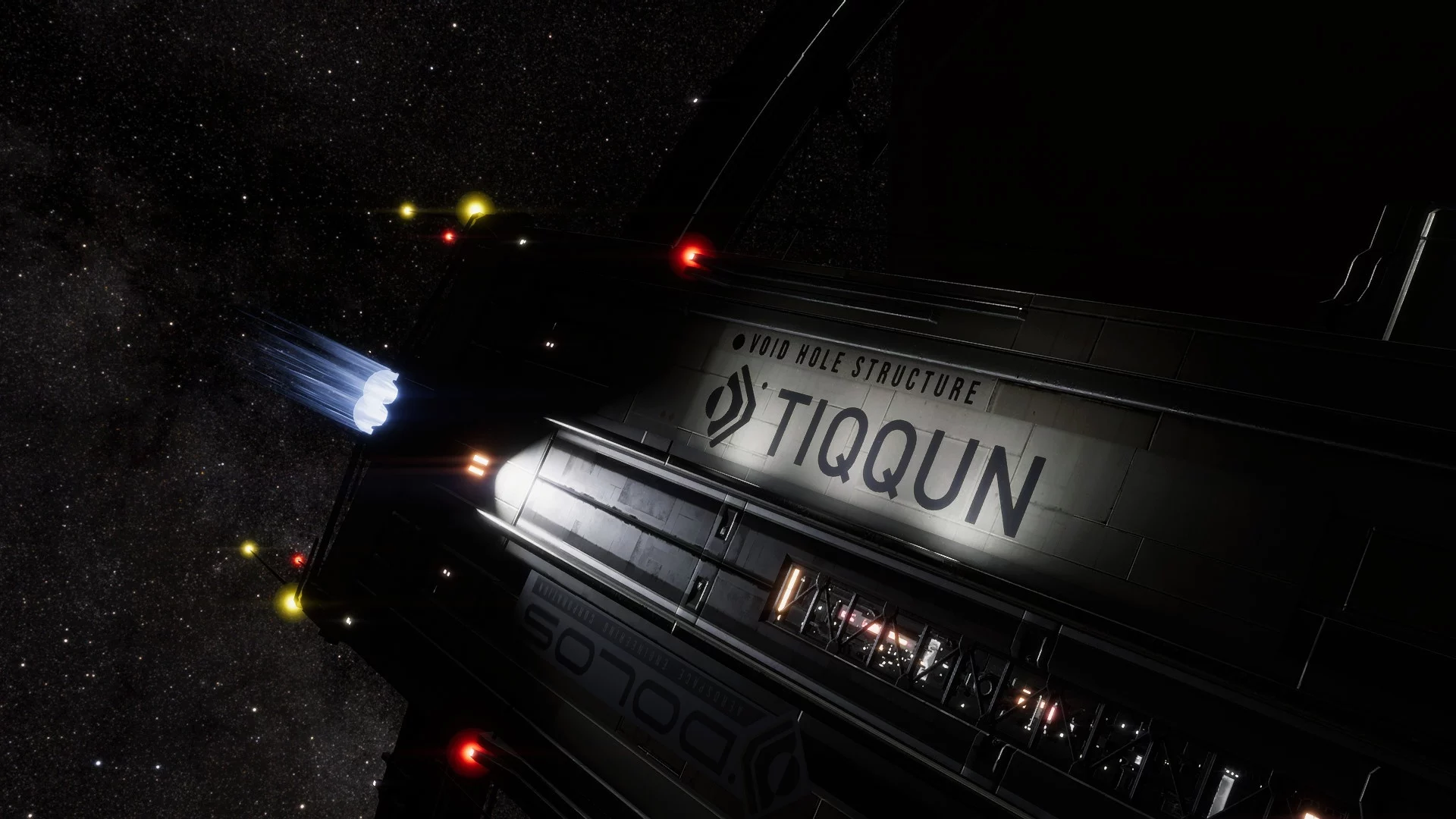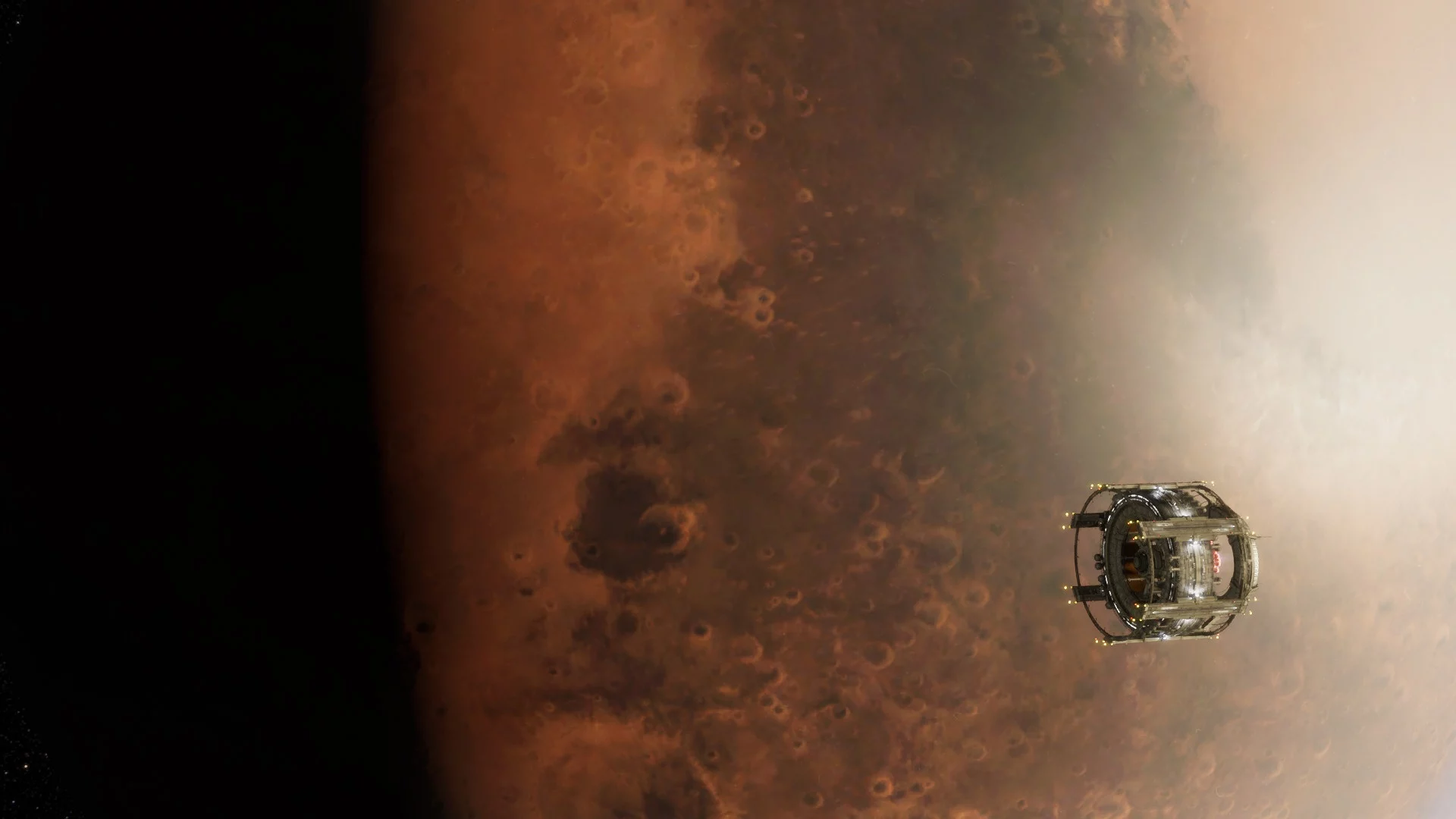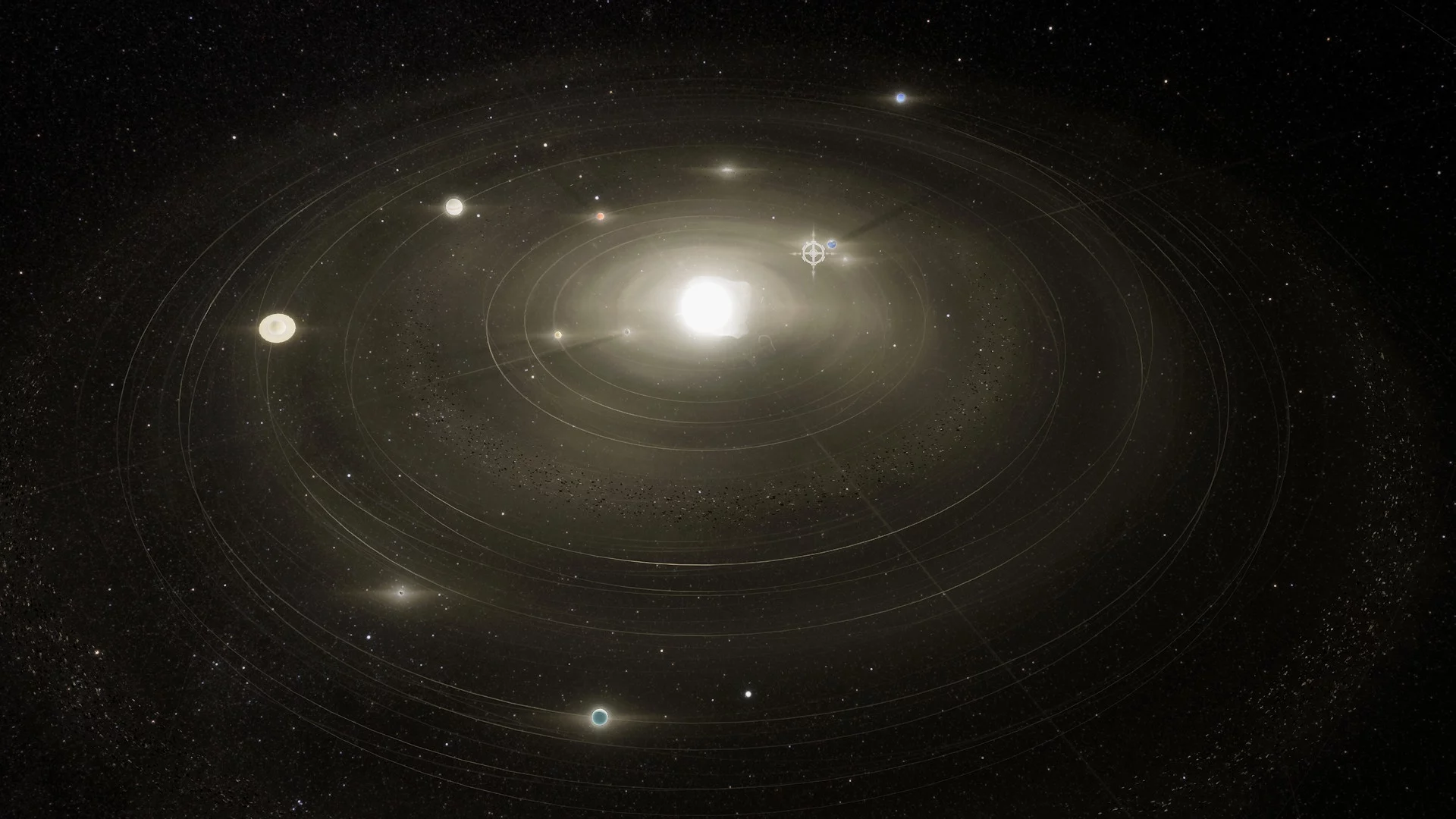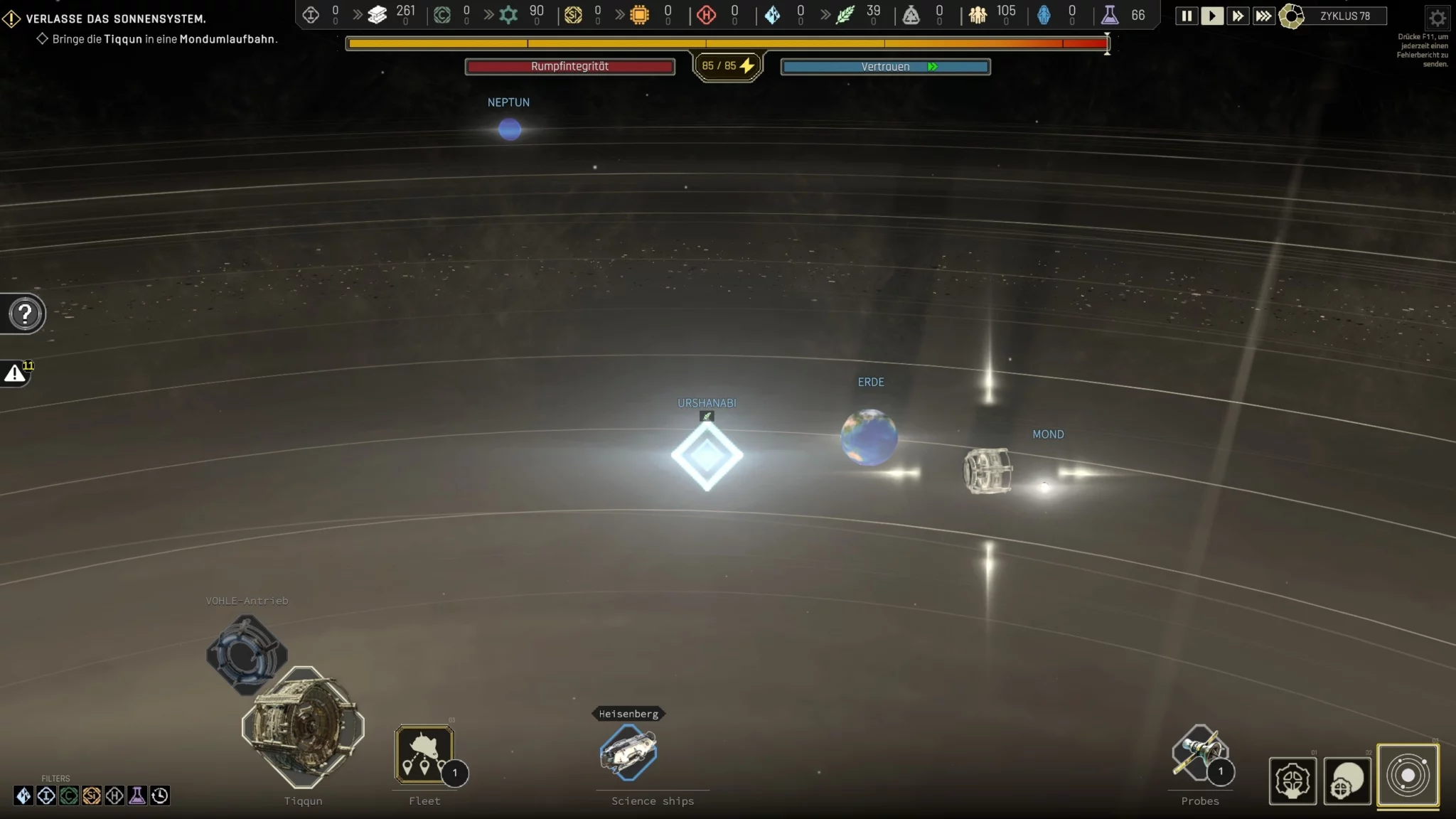The build-up game Ixion promises sci-fi, survival and above all a story. But after the good start, our tester grew more and more grey hairs.
Ixion fascinated me from the beginning. It already started with the great E3 trailer above around the charismatic tech tycoon Vanir Dolos, who in best Elon Musk manner praises his own technology, which promises nothing less than the salvation of mankind. And salvation is what they need, these people who live some 30 years in the future and have to cope with an exploited Earth that Dolos says is beyond saving.
Now these days, putting the destruction of the world by mankind at the centre of a story is not exactly a creative masterstroke. But the well-directed trailer was fun to watch – especially because it”s a building game!
The developers from Bulwark Studios promised me something new in the often too uniform genre: Super looking construction strategy puzzle with survival AND a good story! And on top of that, there is the cool look when playing the game itself, because the round design of the ship is also found in the game.
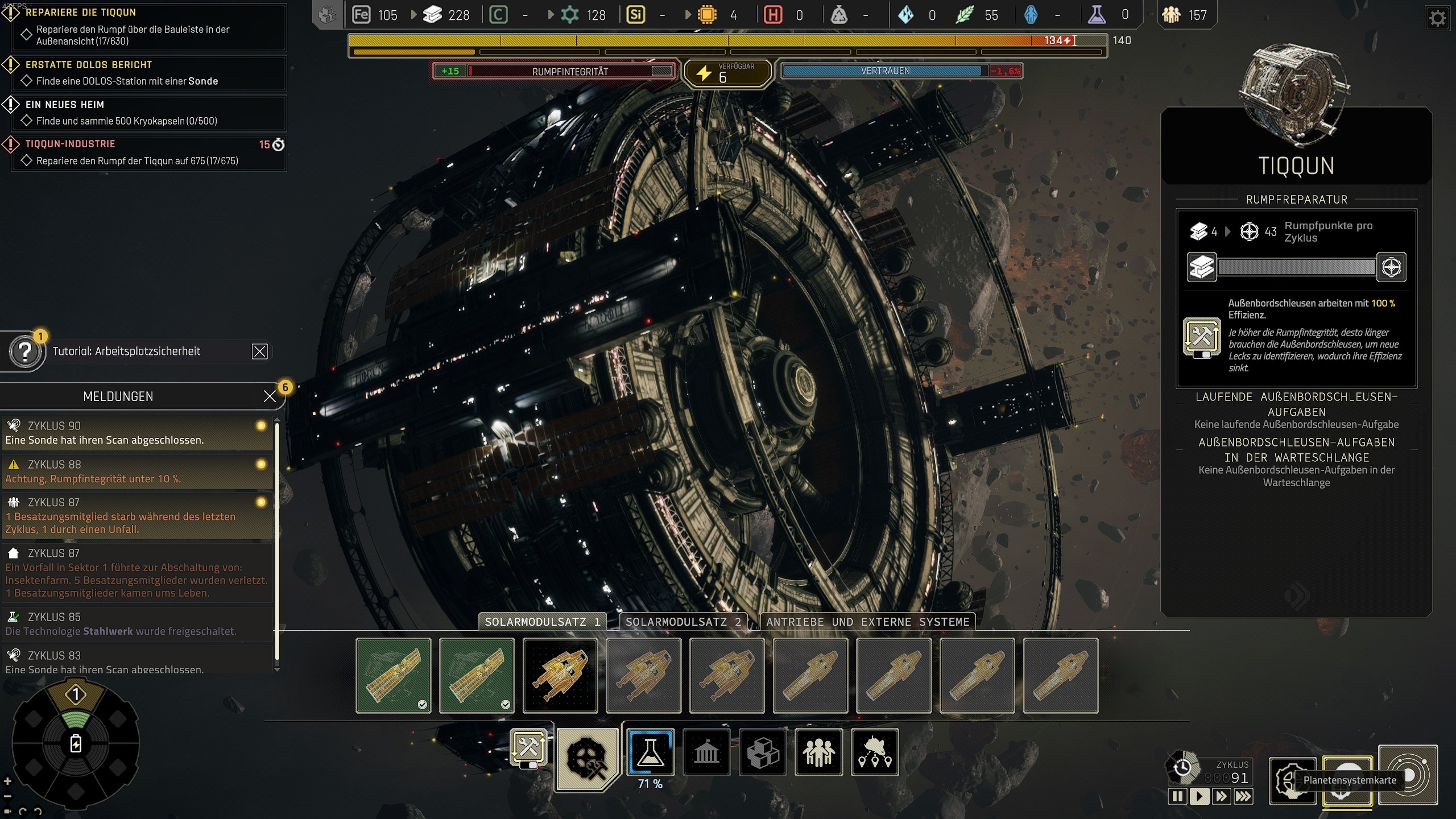
Table of Contents
Act I: Exposition – The Journey Begins
My adventure in Ixion begins with a kind of tutorial in which I have to prove myself as a commander. Only after I have mastered basic tasks am I allowed to “fly” the visually impressive spaceship “Tiqqun” (pronounced like Tycoon) to the moon. For the big show of Vanir Dolos.
While the one down on Earth blathers pathetic stuff, I start the engine – and, as seen in the E3 trailer 2021, blast the moon into manageable pieces. And so, as the player of Ixion, I find myself in the beautifully tricky starting position of being the commander of an extremely advanced spaceship that, as the saviour of mankind, has just pushed it even deeper into ruin.
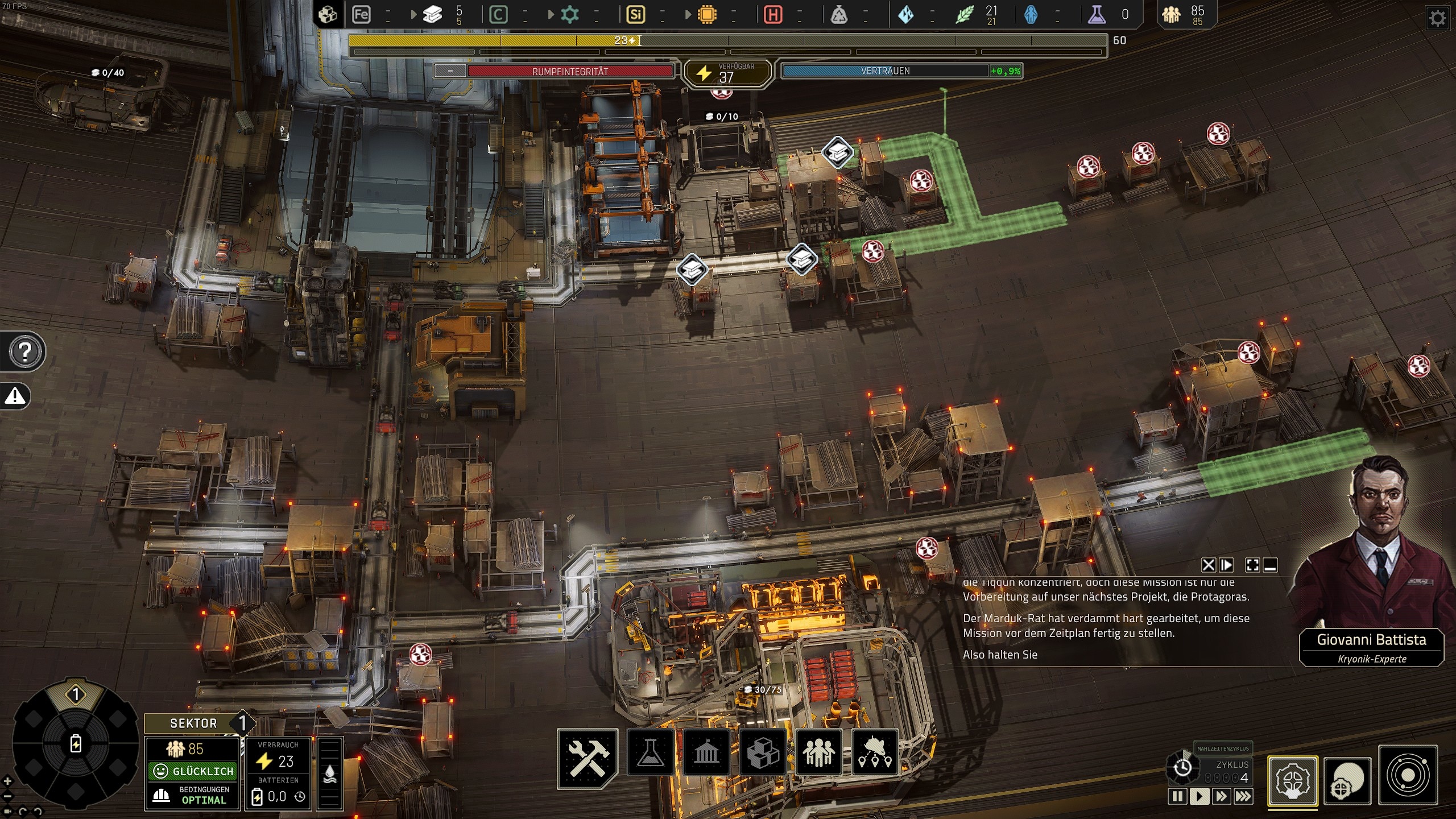
But that”s the least of my problems for now, because the Tiqqun didn”t fare well through the whole debacle either. Neither did my sense of logic. Because instead of being in Proxima Centauri, my ship and I are back in the solar system and for an undetermined, but certainly quite a long time in the future.
Earth is desolate, life gone. While my crew is horrified to digest the news of this loss, I wonder why no one cares why and how the ship made a time jump via hyperspace without moving. On top of that it never does that again later, there it dutifully jumps in space instead of time.
Building Survival
But good, I think to myself, to work. 30 hours as logistics manager are ahead of me, where I have to balance space, manpower and supply of vital systems non-stop. In doing so, I play on three levels:
- In the ship I construct buildings, connect them to roads and manage resources as well as population.
- I rarely spend time in the pretty exterior, I almost only commission new solar panels.
- On the space plane I explore, send probes, manage the mining of resources and interact with events.
>
In order for my crew to survive, I have to provide them with food, which at the beginning comes from insect farms and later mainly from grain cultivation. This in turn requires water, which I obtain from ice that I mine in space.
To do this, I send out probes to find resources (ice, hydrogen, carbon, iron, silicon as well as cryocapsules, which give me new inhabitants when I wake them up). The resources are then mined by my mining ships and picked up by transports. You control both types of ships only indirectly through a job distribution with priorities. For example, you tell a freighter to pick up iron with the highest priority and not hydrogen at all. Since these ships travel quite slowly, it is worthwhile to fly to celestial bodies that are closer to the deposits with the Tiqqun”s sublight drive.
Act II: Complications – It gets tricky
But as long as the Tiqqun is underway, it cannot generate new power via its (expandable) solar panels on the outside, which means that either all operations on board are at a standstill (including the dining halls …) or batteries provide emergency power.
And of course, everything I want to build on board or on the outside costs resources, i.e. steel, electronics and polymers, which I have to produce from raw materials extracted in space – with energy and labour.
A lack of electricity leads to an energy collapse throughout the ship, where not only does work stop in all the buildings, but they can also break down due to overloads. This in turn is bad for the hull integrity. Because as the shipboard AI explains to me, the hyperspace jumps cause damage each time, necessitating permanent repairs to the existing hull.
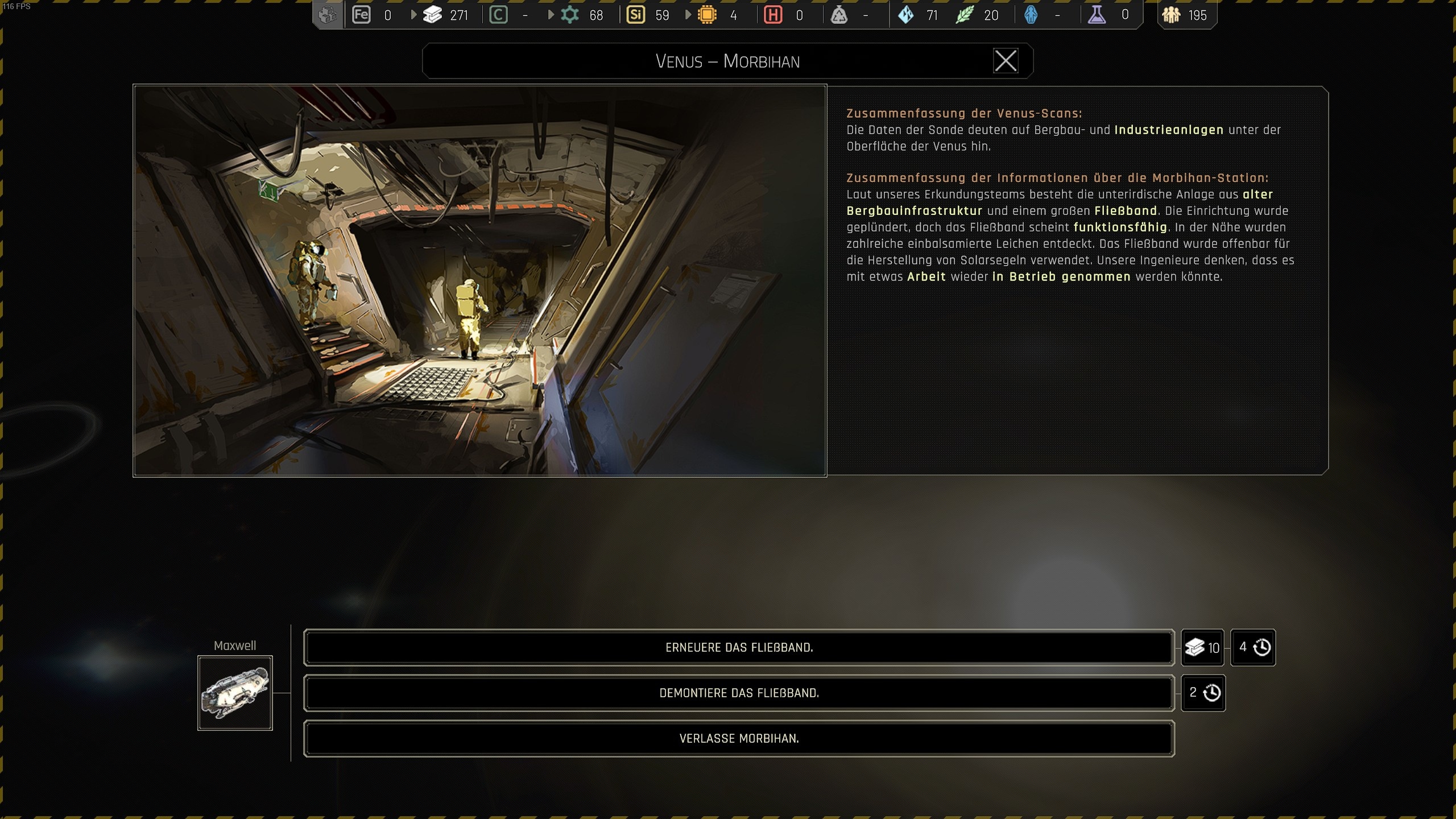
So labour, electricity and steel are constantly flowing into these repairs. If one of the three points fails, the hull slowly goes to the interstellar dogs. If the bar arrives at zero, I have lost. So if the electricity fails, no repairs are made and the decay accelerates even more due to broken buildings. So I have to see to it that I get the power grid back online, for example by switching off unnecessary facilities, and get the hull status bar back towards 100 per cent.
You will fail – and often
And yes, Ixion likes death spirals. A small problem here can mean death. So be prepared for frequent loading of an older save game if you hit a dead end. For example, my end also beckons if I can”t get enough iron for steel production (repairs and building construction). Or if the ice runs out and the fields are no longer irrigated.
On top of that, I also have to keep an eye on crew satisfaction. Besides the food supply, this is influenced by the quality of the dwellings, medical care, decrees and monuments that bring stability, as well as being modified by permanent effects and events. If the approval of my leadership based on this reaches zero, I am also out. In addition, buildings go on strike, which can sometimes hit the dining hall or the hospital, which only makes things worse.
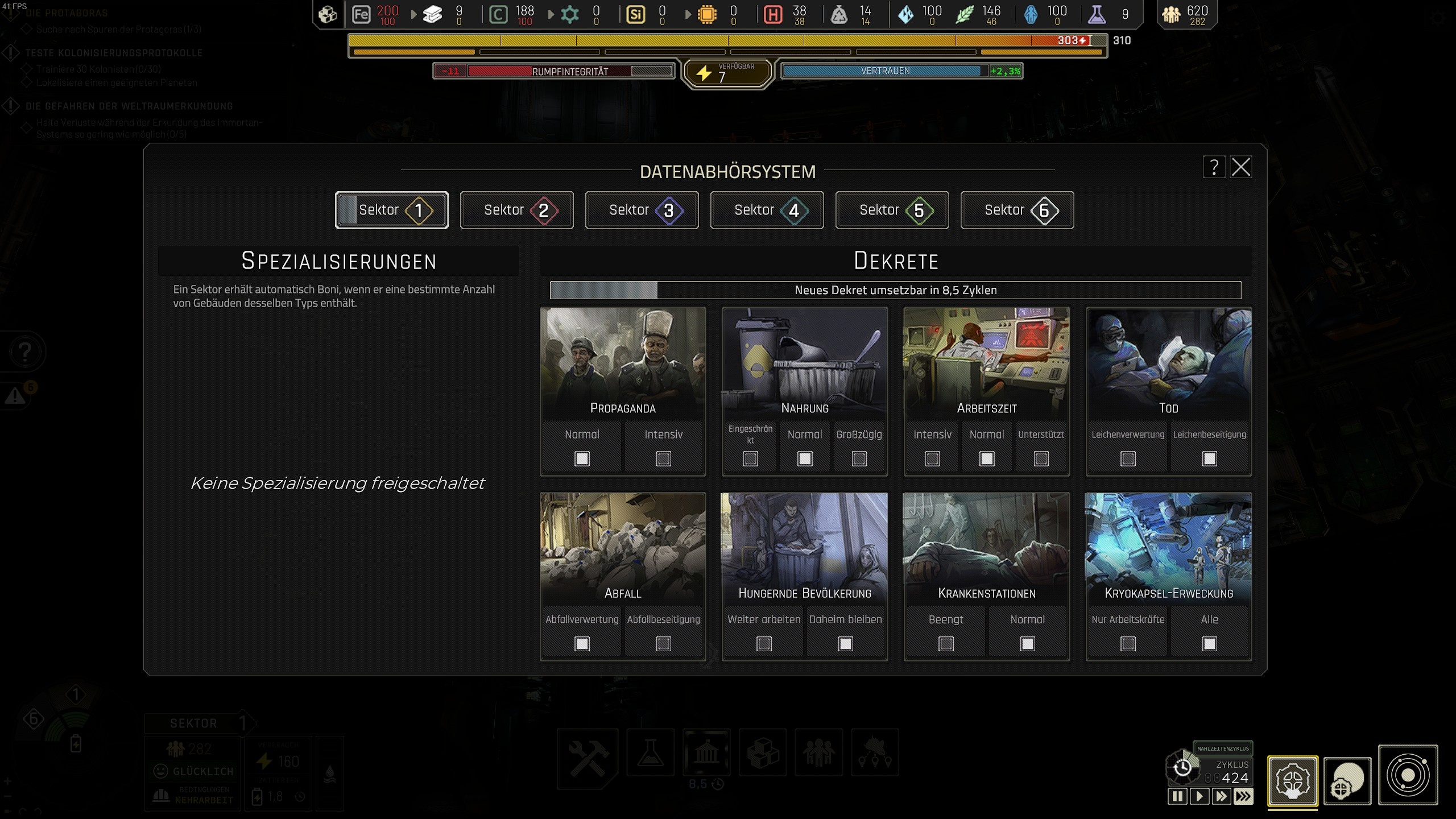
And because that”s not complex enough, there”s now another trick to the spaceship design. Namely, the Tiqqun is divided into six sectors. At first I only have one and can unlock the others over time to get more space. But I have to manage each sector individually, so each has its own raw materials, inhabitants and individual stability.
So there can be a famine and an angry, rioting mob in one sector while everything is hunky-dory in the adjacent one. However, resources and population can be constantly exchanged between the sectors, which you again solve in menus where you determine which sector should at least store how much of which raw material before it gives something to other sectors.
This sounds easier than it is, because due to the lack of space on board, I can”t just react quickly if a resource accumulates too much, clogging up the stockpiles and ultimately even the docking bays and preventing the delivery of other resources.
In short, the management part of Ixion is tough as nails. Sometimes it”s frustrating (when you have to reload again), then motivating (when you make noticeable progress through fiddling) and last but not least enervating (when the game lapses into grind).
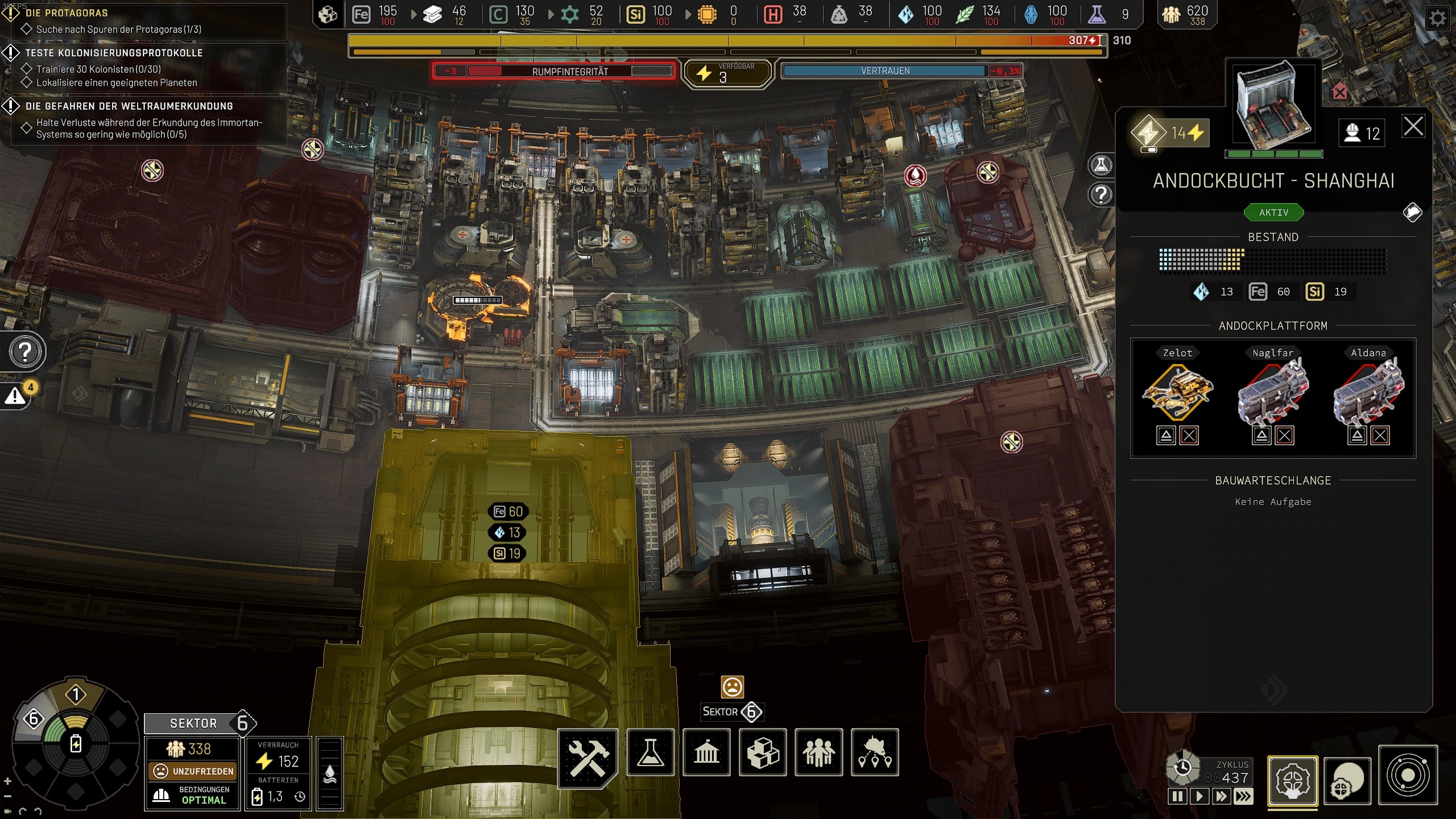
Control and interface could be better
Naturally, the complexity only comes into play gradually. Stupidly, the game doesn”t explain some important aspects well and hides elements somewhere in its interface where you intuitively don”t look for them. As a result, at least I had to play longer passages from scratch again and again. Because Ixion does not forgive mistakes.
The same applies to the controls, where many little things add up over time. To get back into the game after saving alone, I have to make three clicks in different places (or press ESC three times). And I can”t follow and operate the research from the space level. Since I can only commission two researches at a time, it”s terribly tedious not to forget and keep the scientists on their toes.
Act III: Klimax – The playful climax
And while we”re on the subject: In Ixion you research new buildings as well as upgrades for them. The balance is still a bit off, because some of the improvements are pretty useless. Overall, however, this aspect works very well, as I have to work hard for every research point, especially in the beginning.
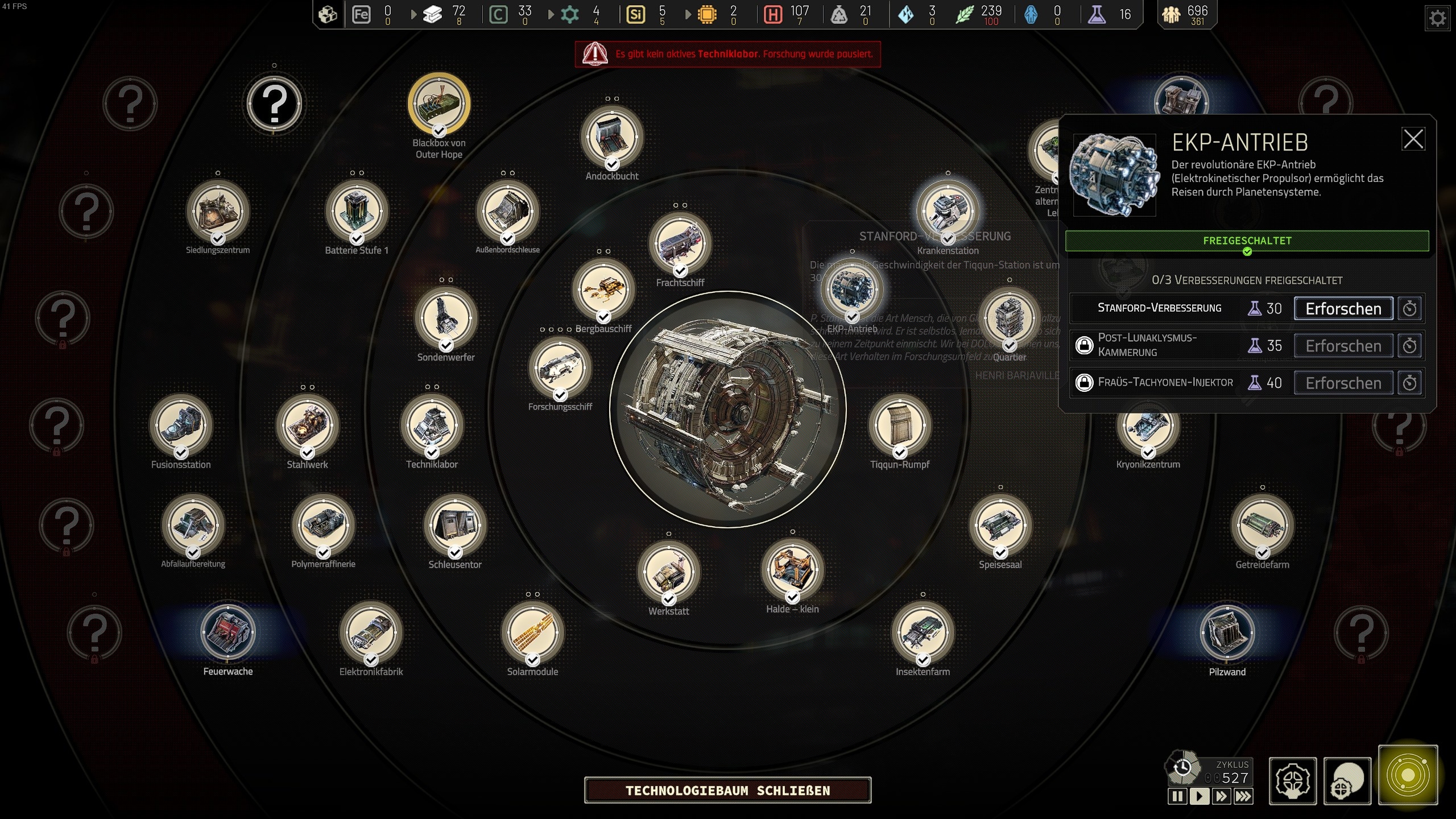
I (almost) only find them during expeditions in space. In every system, I use my probes to find resources as well as planets to which I can send research ships. There, a short series of events usually unfolds in which I have to decide what the researchers should do. I can, for example, carry out a quick analysis or immediately set up a temporary observation post, which, however, takes more time and requires additional resources for construction.
Depending on my decision, I then receive rewards in the form of additional raw materials, cryocapsules for new inhabitants or research points. But if things go badly, my entire crew and ship will die. Their chances can be improved by upgrades.
The game gets additional depth from “space weather”, which causes problems for the Tiqqun as well as the transporters, probes and research ships. The small ships tend to die in it and the Tiqqun”s hull crumbles even faster. In some of the five chapters you will therefore have to play tactically around these areas of space in order not to bite the dust or the steel floor.
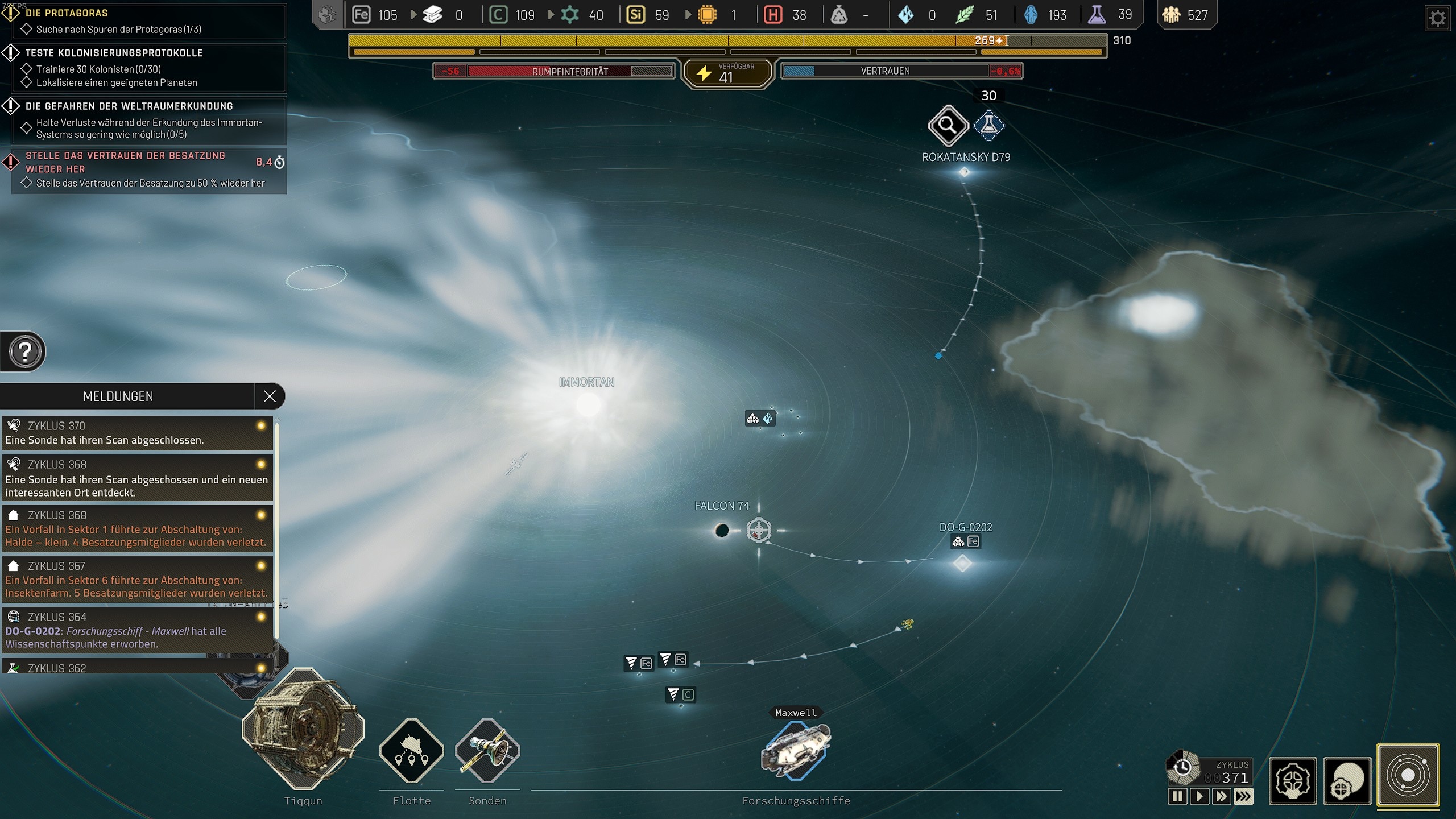
As the game does a good job of balancing the complexity of the build-up and the demands of the survival mechanics as well as the exploration, I experience the peak in terms of gameplay in the middle part after about ten to fifteen hours. Because then all the functions are available to me and I have finally understood all the mechanics correctly in order to skilfully defy adversity – and am still forced to reload again and again. But Ixion just doesn”t want to be easy and that”s a nice change again.
Act IV: Peripetia – The grind drags the game out
But now, towards the end of the second chapter, the game slowly reveals its greatest weakness. Ixion is increasingly poorly balanced as the game progresses, which drags the game out unpleasantly. Some objectives require far too many resources, which makes grind necessary.
Since Ixion”s simulation always leads to disaster without constant vigilance, on the one hand I watch bored as the steel industry and transporters make agonisingly slow progress, and on the other I have to keep a constant watchful eye on my sectors and the hull.
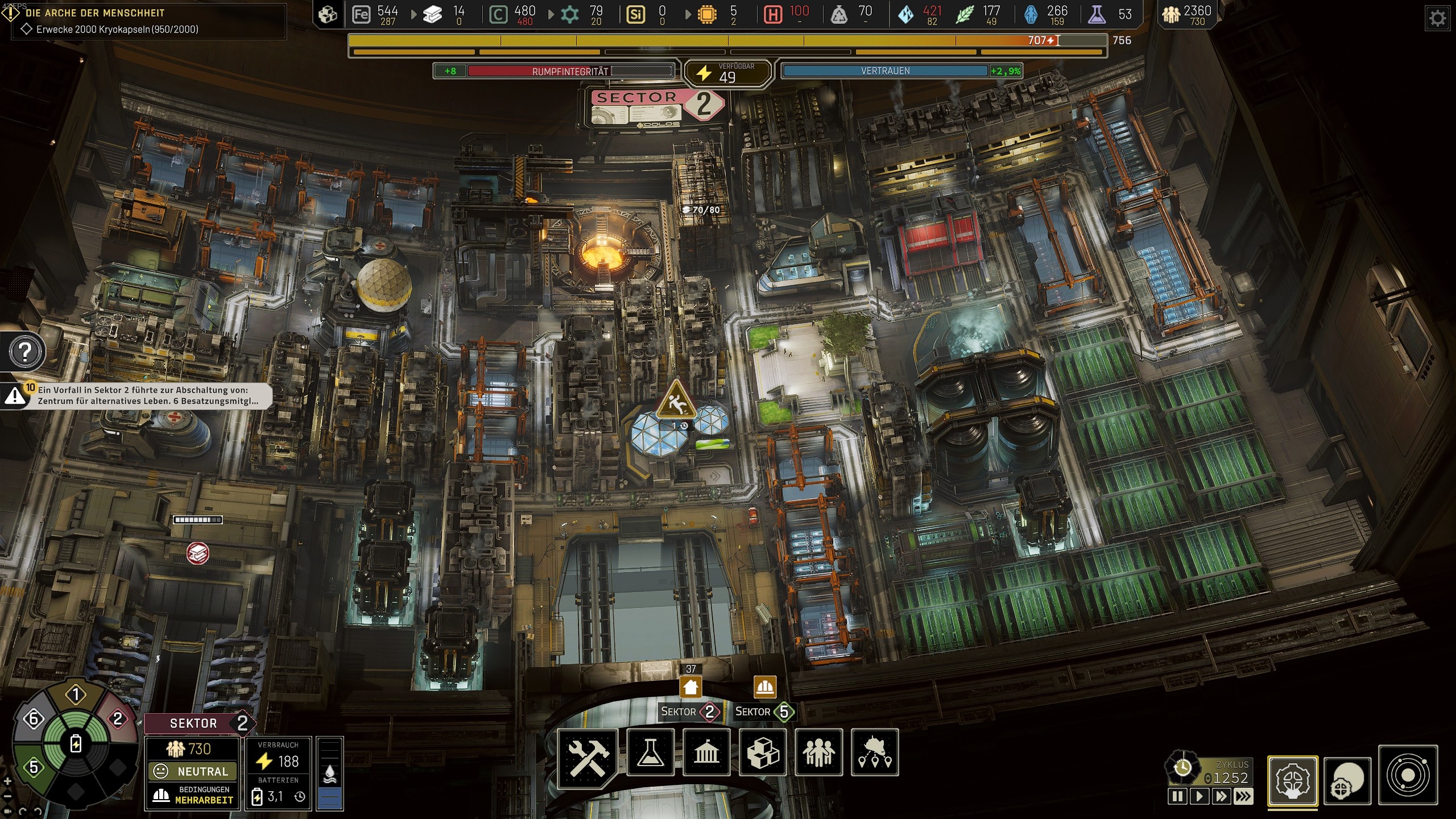
If I don”t do that for a while, I”ll have lost faster than the blasphemous Ixion can turn once in a circle on his heavenly wheel of fire. And that then means repeating the whole grind just seen from the last acceptable save point.
It doesn”t help that I don”t have much of the game”s graphical splendour at this stage. This is because it mainly shows in the outside perspective (which I hardly use), in hyperspace jumps (which don”t happen at such times) and in cutscenes, which only exist at the beginning. Instead, I either stare at the, in my eyes, spartan space map or look at the interior, which due to its setting (a large cargo hold!) also becomes dull over time.
Act V: Catastrophe – The meaning gets lost in space
Overall, I also have the impression that Ixion didn”t quite finish. I blame this on the lack of balance (especially in the last chapter) as well as the presentation. In the tutorial, for example, characters with their own sound appear, but are never seen again.
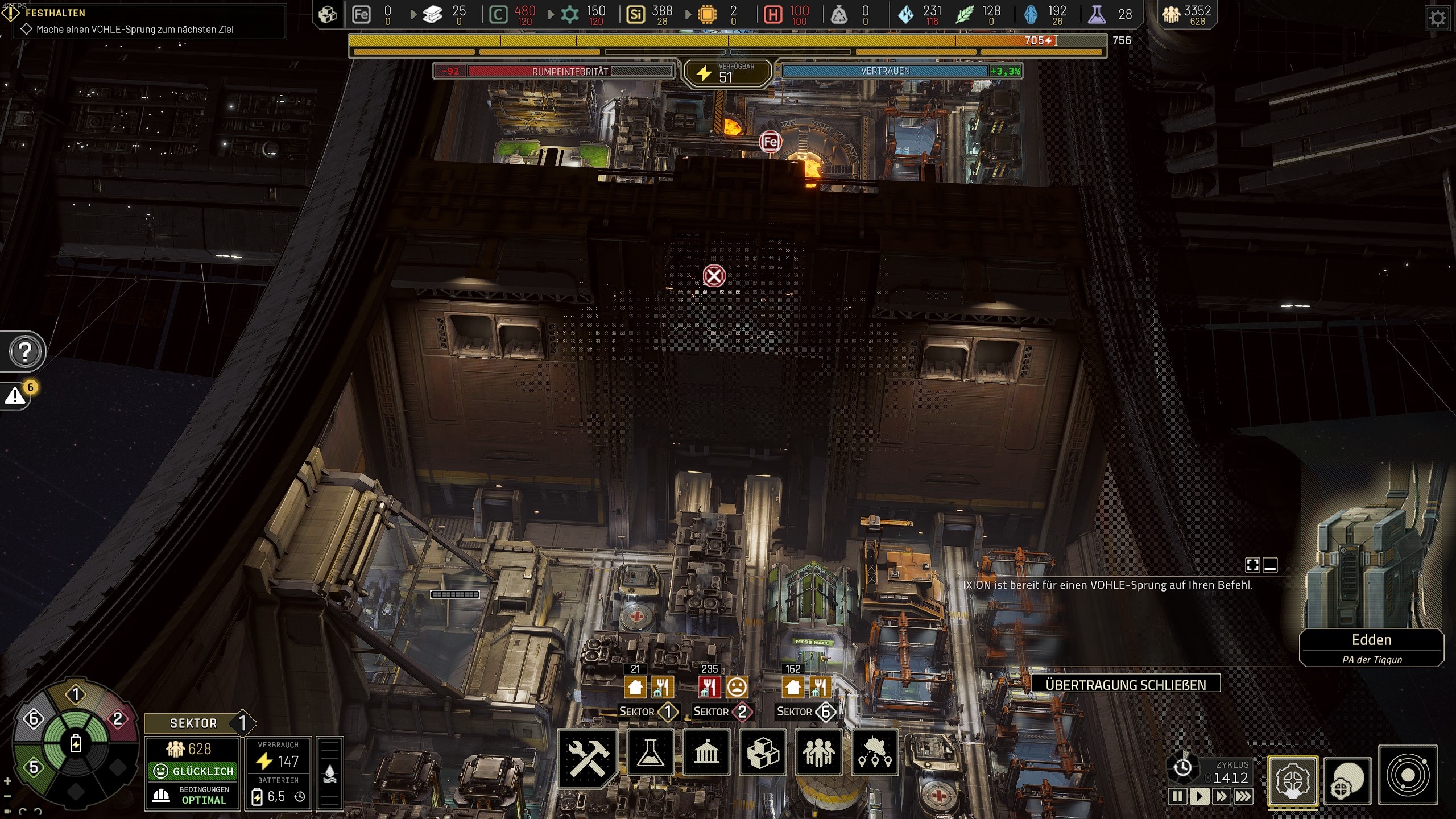
Furthermore, the story is completely abstruse, illogical and doesn”t feel like it”s all of a piece. And that is perhaps my biggest disappointment with the game. However, I”m also a bit special when it comes to story. For me, a certain inner logic is important in films, books and games. I”m aware that many people don”t feel that way, so this part is certainly not relevant for everyone. And if you still want to play the game yourself, you should skip the rest until the conclusion anyway.
I warned you.
Warning: the following paragraph contains spoilers
Editor”s conclusion
Oh my goodness. I haven”t been this excited about a test in a while. This is partly due to the balancing problems, partly due to my job as a tester, which requires me to complete a game relatively quickly. And Ixion is very badly suited for that. Because if I miss something on the highest speed level, all hell breaks loose.
But as time went on, I enjoyed playing Ixion. Because I like it when games present me with challenges that I have to overcome. And since the basic build-up loop works really well, it also felt satisfying.
But then the grind gets worse and the game becomes tough. Towards the end, Ixion even feels like it was quickly plugged together. The good thing is that these are problems that the developers can get to grips with if they keep their eye on the ball now. Then perhaps Ixion would be much less frustrating by the Christmas holidays.
What can”t be fixed, however, is the storyline, which is terrible in my eyes. It seems as if the developers had a cool basic idea and then didn”t know what to do with it. Or so much was changed and cut out in the course of development that all that”s left in the end is a mutilated corpse.

